Russian drones attack Kharkiv, explosions heard in city
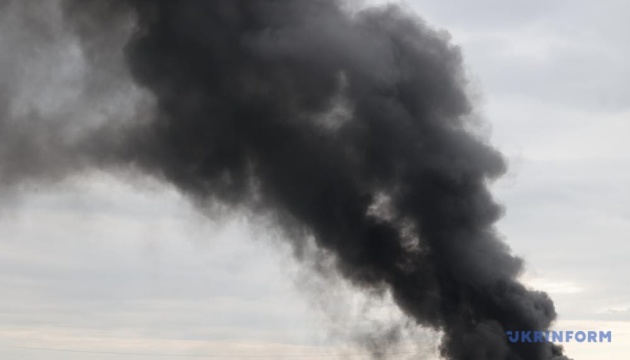


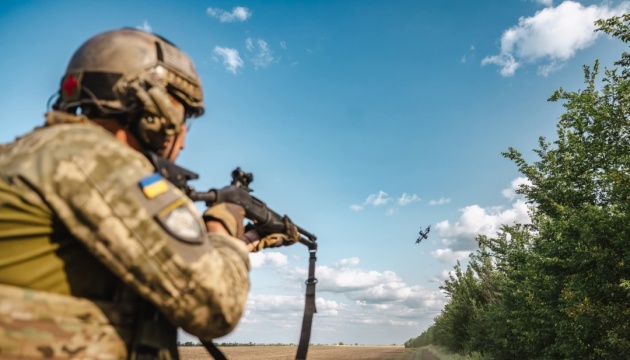

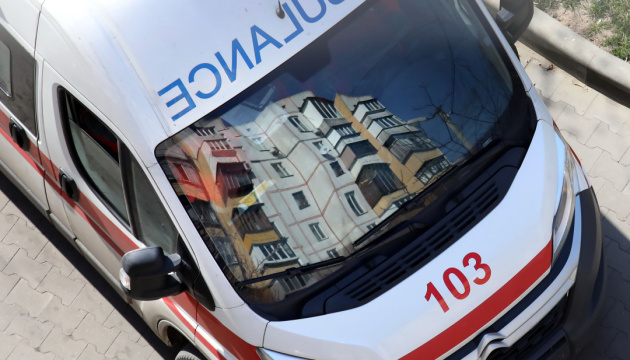

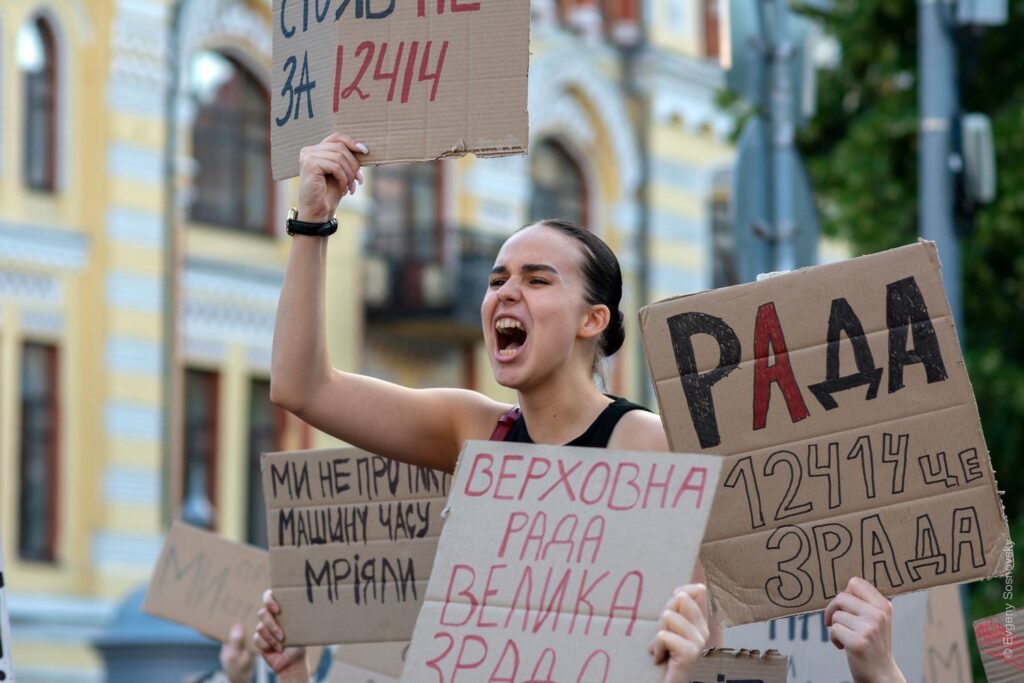

“Fucked up reformers!” screamed the sign of 18-year-old Polina, the girl with the green hair. Her companion’s metaphorically shouted “CUNTS” in huge green letters. Teenage profanity filled every corner of the first large wartime protests engulfing Ukraine’s capital.
It could have been any Gen Z rebellion against the system. And in a way, it was—against a system where President Zelenskyy gutted Ukraine’s anti-corruption bodies over just 72 hours. Except it was also a protest for a system—the one Ukraine dreamed up during the Euromaidan revolution in 2014.
“I don’t give a f*ck,” Polina snapped back at criticism over the protests’ expletive language. “Swearing allows you to express an opinion and is part of the freedom of speech. Get it?”
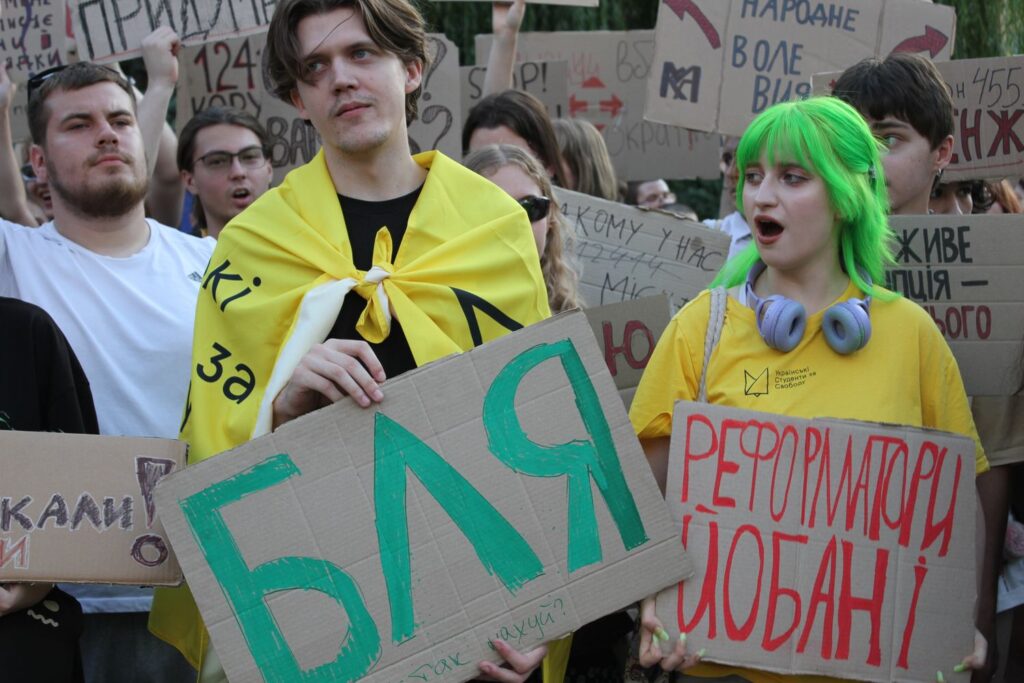
Prudes on Facebook scolded protesters like her: it was beneath Ukrainian national dignity to devolve to such unholy vocabulary.
Yet there she was, a first-year student of Ukraine’s top university, one uncle killed during the 2014 protests where Ukrainians rebelled against a pro-Russian president’s U-turn on EU integration, and another uncle killed fighting the Russian invasion, unapologetically demanding political accountability from Ukraine’s president.
“We know our history, we know why this happened. We are fighting for our freedom from Russia. We are against Ukraine turning into Russia from the inside. So, NABU should be an independent institution,” she said.
Polina encapsulated the main demand of the protests—that a law to bring Ukraine’s anti-graft agencies under the control of a presidentially appointed prosecutor is repealed.
Tens of thousands of people like Polina, holding a sea of cardboard signs, may have just saved Ukraine’s democracy.
Protesters against corruption in Kyiv. Photo: Evgeny Sosnovsky
Twenty-three-year-old Zinaida Averina never expected to become the architect of Ukraine’s first wartime democratic uprising. When parliament rushed through legislation gutting anti-corruption agencies on 22 July, she created a Telegram chat for protesters that exploded to over 2,000 people within hours.
“The only person who filed an application with Kyiv city administration for the 23 July protest was my friend Sofi Wisdom, also 23,” posted activist Anastasiia Bezpalko. “None of the organizations or opinion leaders who called for protests did this basic work. The girls showed leadership in a crisis and took enormous responsibility.”
The chat became a masterclass in grassroots democracy. Participants debated protest demands, coordinated with police, organized snacks and water stations, and—uniquely for a political movement—created separate threads for memes and hookups. “What could be sexier than a clear civic position?” joked one organizer. “We need to solve the demographic crisis!”
Many signs cheekily declared “This cardboard is paid for”—a stab at conspiracy theories claiming Western funding behind the protests’ eruption.
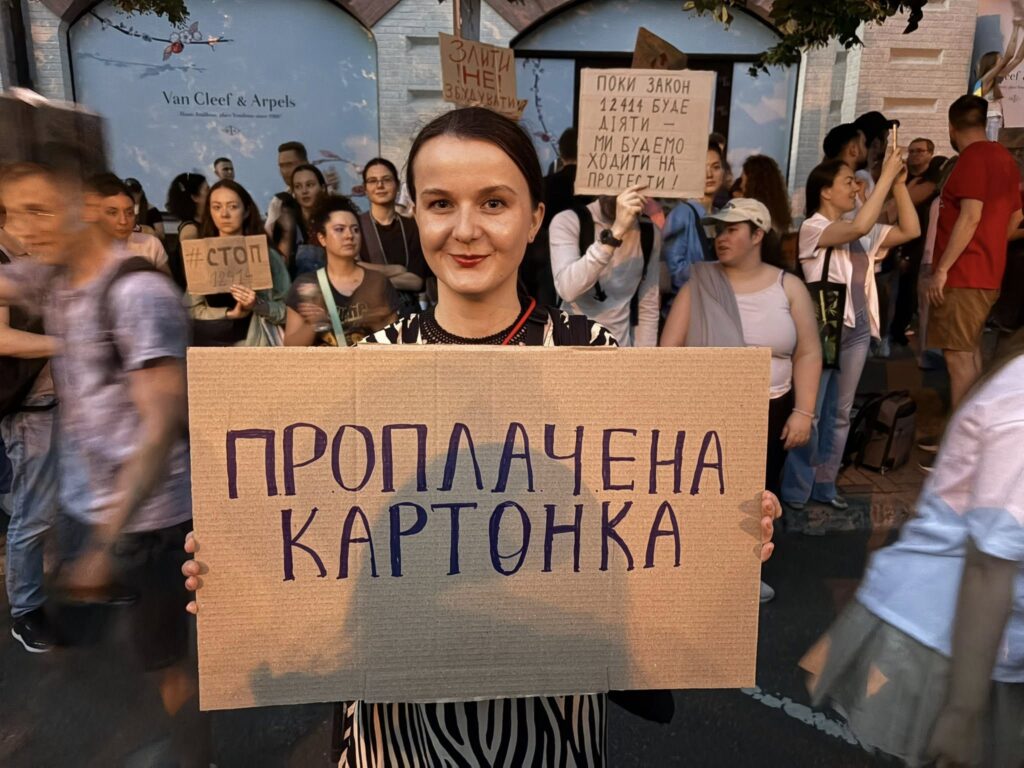
But the most remarkable thing happened on the streets. “Two very young people, eyes shining with excitement, look at the crowd,” overheard researcher Anton Senenko. “Katya, this is our first Maidan!” one exclaimed, hinting at the protest pedigree of Ukrainians—each revolution happens on Kyiv’s Independence Square, Maidan Nezalezhnosti. They kissed.
That romantic moment captured everything about this movement. For Western teenagers, political engagement often means attacking institutions. For Ukrainian Gen Z, it meant defending them—while falling in love doing it.

Critics fixated on the protesters’ colorful language, missing why it was so politically effective. Oleksandr Rachev explained the strategy behind the swearing.
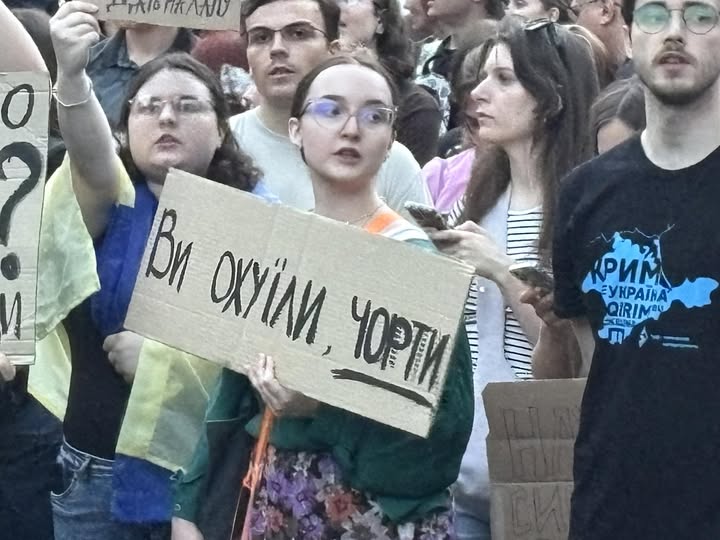
“When you tell authorities ‘you’re wrong,’ you stay within a model of respect that doesn’t frighten them,” he noted. “When you say ‘you’ve lost your fucking minds,’ it means questioning their very legitimacy. And that scares them.”
The profanity served another function: mass appeal. “Swearing is considered the language of ‘ordinary people,'” Ravchev continued. “University professors and activists don’t swear—that’s why they stay in their intellectual bubble. Swearing is a bridge between creative youth protesting and ordinary voters who actually vote.”
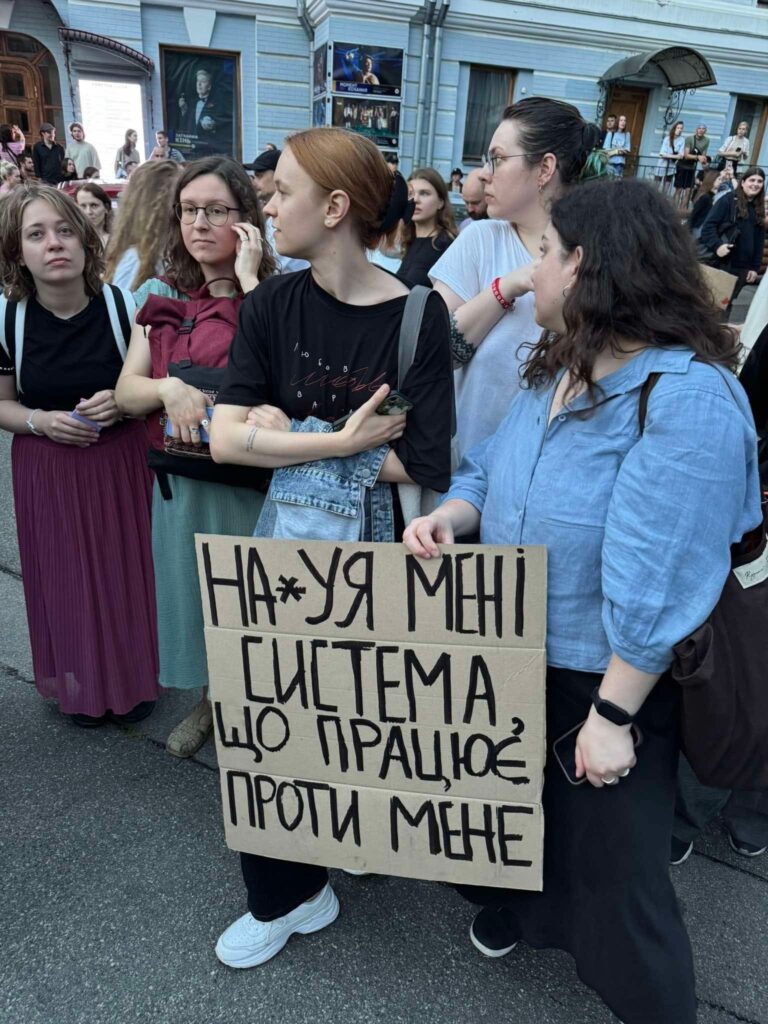
The slogan “I need a system that works for me” would be fine for intellectuals, he argued. But “Why the fuck do I need a system that works against me?” reaches ordinary people’s minds. “Because that’s exactly how they talk.”
Behind those Facebook posts scolding protesters about “pure language,” Ravchev detected real fear: “The authorities are terrified that profane protest slogans will reach mass voters and sweep them away.”
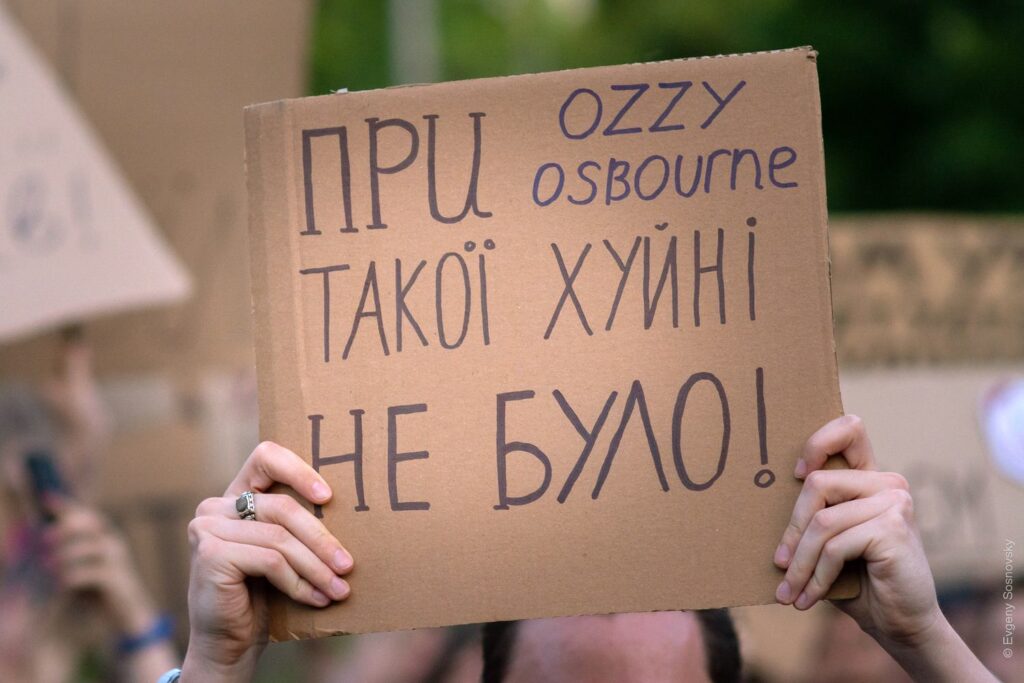
Academic Volodymyr Kulyk found himself shouting “The Office fucked up” despite never swearing in front of his wife in 35 years. The moment surprised him—but he understood what was happening.
The youth had “finally desacralized power, which can now be addressed without picking words, at least when it deserves it,” he wrote. When even a polite academic starts cursing at the government, something fundamental has shifted.
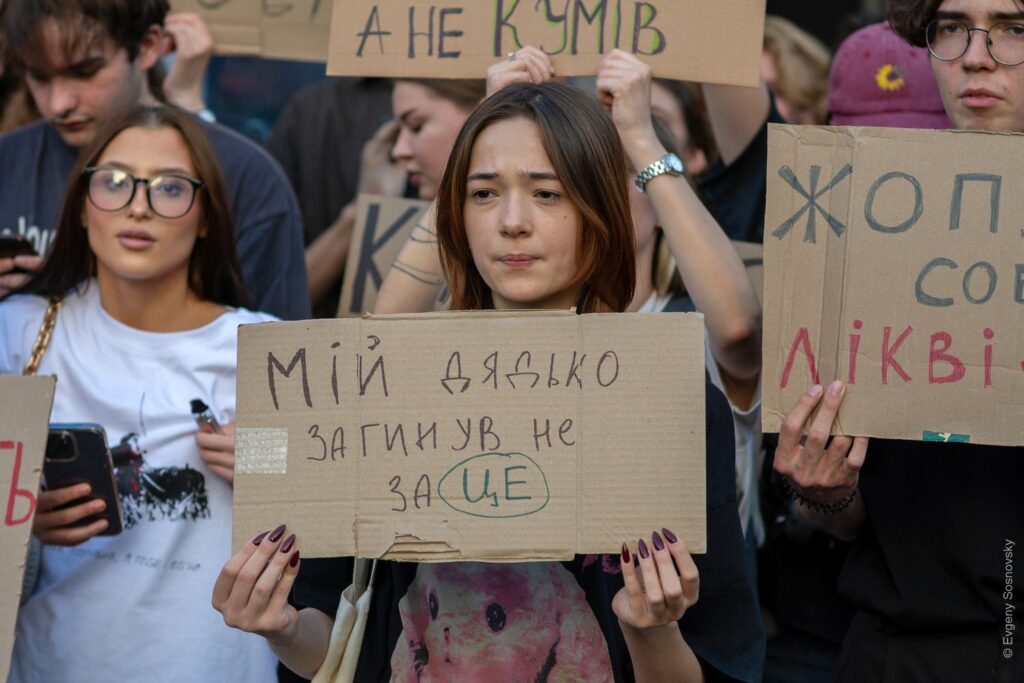
But there was a deeper reason behind the raw language. These weren’t typical teenagers. Tetiana Troshchynska noted: “My hairdresser tells me about all the gray children she gives haircuts to. 12, 13, 16 years old. Half-gray heads, gray streaks, gray like salt. I tell some, not others, because they’re sad and crying. I don’t know where they’re from, what they’ve experienced, who they’ve lost.”
The Kapranov Brothers added: “Swearing is a consequence of war, exactly like ruins, minefields and trenches. Just as we’ll have to demine forests and seas from Russian mines after the war, we’ll have to demine heads from swearing. But—after the war.”
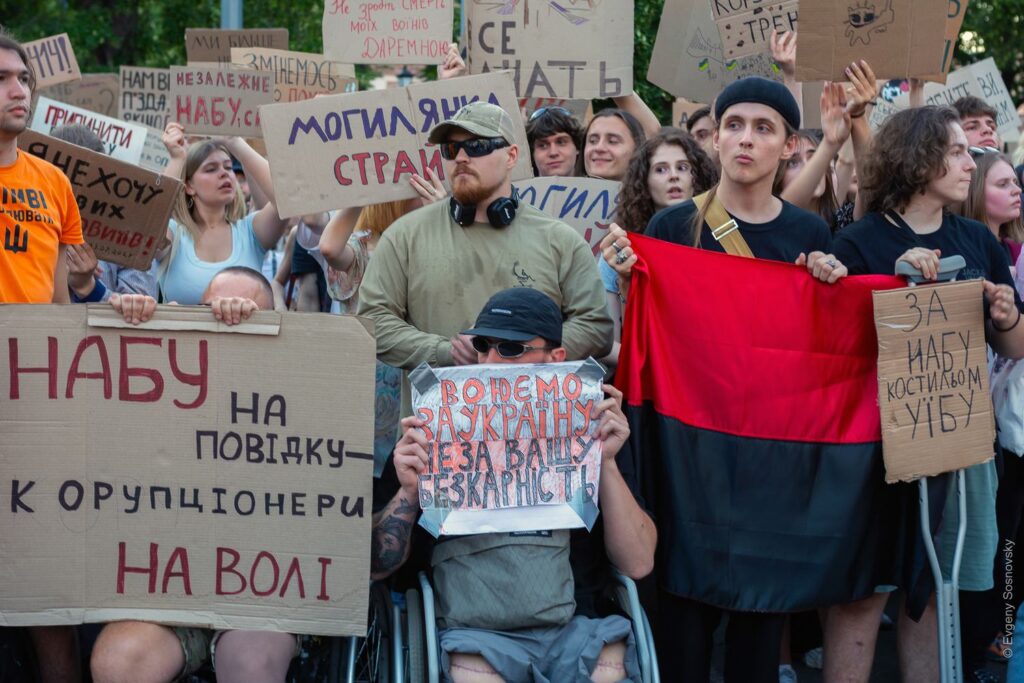
These weren’t kids who idealized the two anti-corruption agencies, NABU (National Anti-Corruption Bureau) and SAPO (Special Anti-Corruption Prosecutor’s Office). Most protesters readily admitted both agencies had problems—corruption scandals, slow investigations, bureaucratic failures.
But they grasped something critics missed: the choice wasn’t between perfect institutions and flawed ones. It was between flawed institutions and no independent oversight at all.
“They’re trying to get rid of essentially the only anti-corruption mechanism that Ukraine has,” Marco, a 25-year-old who lived in Chicago for a decade before returning to Kyiv, explained to Euromaidan Press. “By doing that, they’re trying to integrate it into the actual government, which makes it so the people in government who are corrupt decide whether they themselves are corrupt, right? So, it’s a little counterintuitive.”
NABU and SAPO, whatever their flaws, were the first real separation of power in Ukraine—bringing it closer to a functioning democracy and further from the likes of the autocracies in Russia and Belarus.
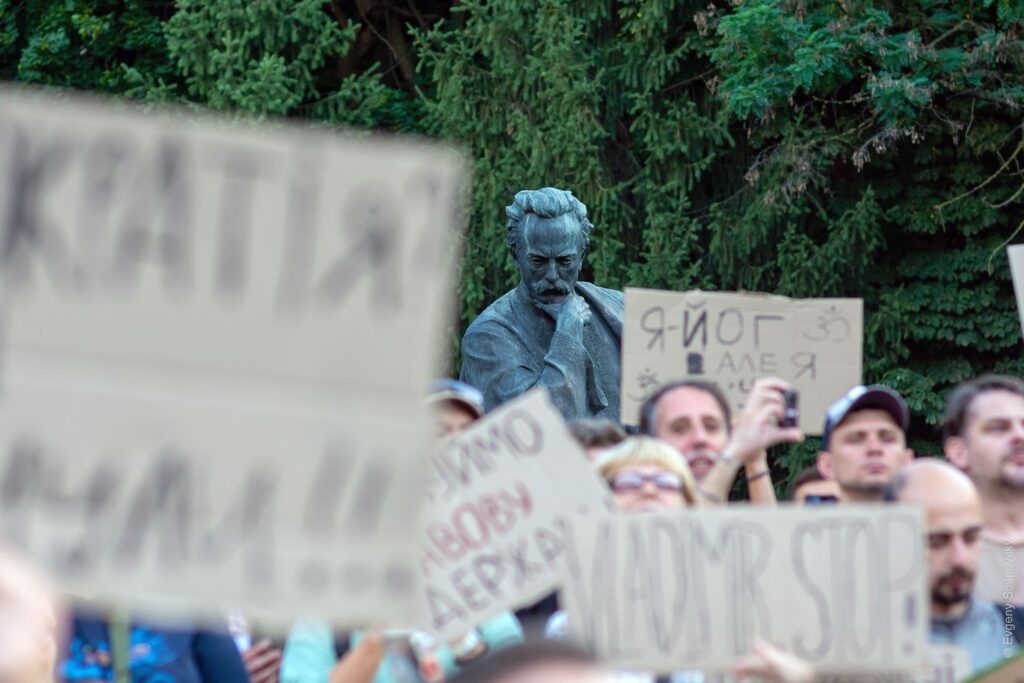
But focusing on the swearing missed the real cultural phenomenon. Most signs weren’t profane—they were poetic. Ukrainian cultural observers noted that these cardboard creations represented “real poetry, with all its nerve and broken form. Something in the tradition of Ukrainian futurists—short, with broken lines, unconventional syllable division.”
Signs mixed Latin script with Cyrillic, quoted Taras Shevchenko alongside modern poets, featured portraits of Lesya Ukrainka next to Zelensky caricatures. “Do cattle low when NABU is whole?” parodied Ukraine’s most famous poem. “Nations don’t die of heart attacks—first their NABU and SAPO are taken away,” riffed on national poet Ivan Franko.
“If you want to know where modern poetry is in Ukraine—here it is, on these cardboards,” one literary critic observed. “Poetry as a weapon is something very Ukrainian.”
This was Ukraine’s first Twitter-era protest movement, where anyone could express themselves in short, punchy statements.
Yet paradoxically, it produced some of the most sophisticated political poetry seen on Ukrainian streets:
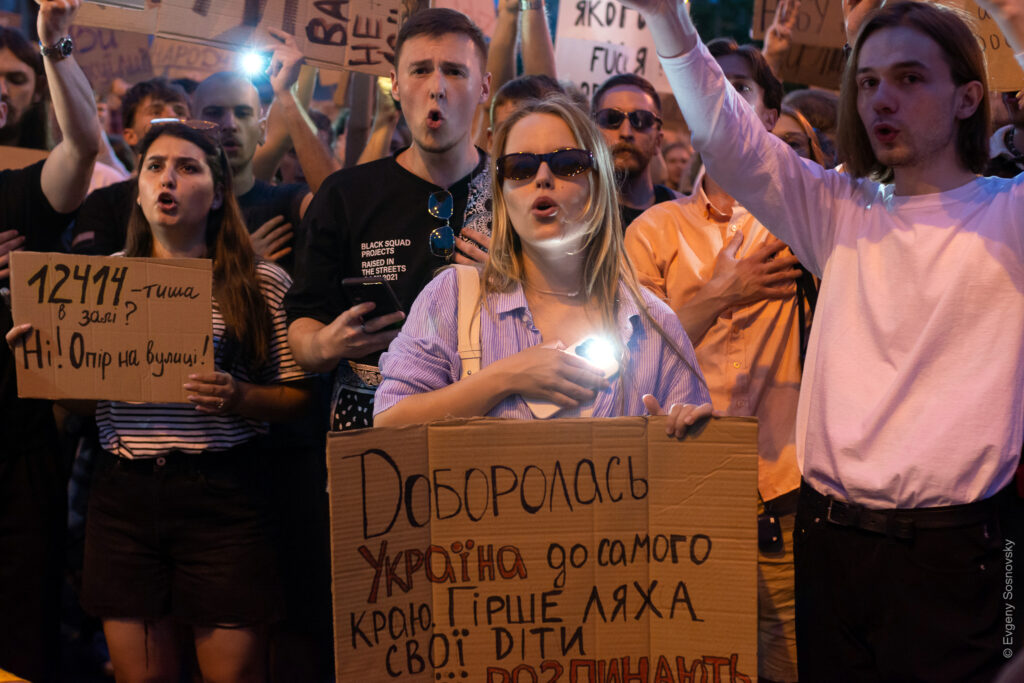
“I demand 263 explanations,” says one protester, invoking the 263 MPs who voted for the law, amid a sea of Gen Z’s cardboard signs right at the backyard of the President’s Office in Kyiv. Photo: Evgeny Sosnovsky
The protests revealed something deeper than anger over specific legislation. As wounded veteran and protester Sabir explained: “We had an unspoken social contract: we don’t criticize the authorities during war, but they don’t pull any bullshit. But they kept pulling bullshit. Now they decided they could allow themselves more. People showed they couldn’t.”
The speed of the legislation shocked even seasoned political observers. Bills typically languish in parliament for months. This one passed in hours, with Zelensky signing it the same evening as protests erupted outside his office.
“When you pass such a law in one evening, it looks very much like fear of losing power,” said IT worker Olena Danyliuk, 31. “They’re trembling at the thought they might have to give up power.”
EU officials were reportedly shocked when they learned of the legislation. Brussels had planned to secretly fast-track Ukraine’s accession talks, but the anti-corruption law threatened that timeline. Perhaps Ukraine was following Georgia’s trajectory—offering high hopes but ultimately succumbing to pro-Russian authoritarianism?
Not so fast, said the youngsters with their “silly” signs.
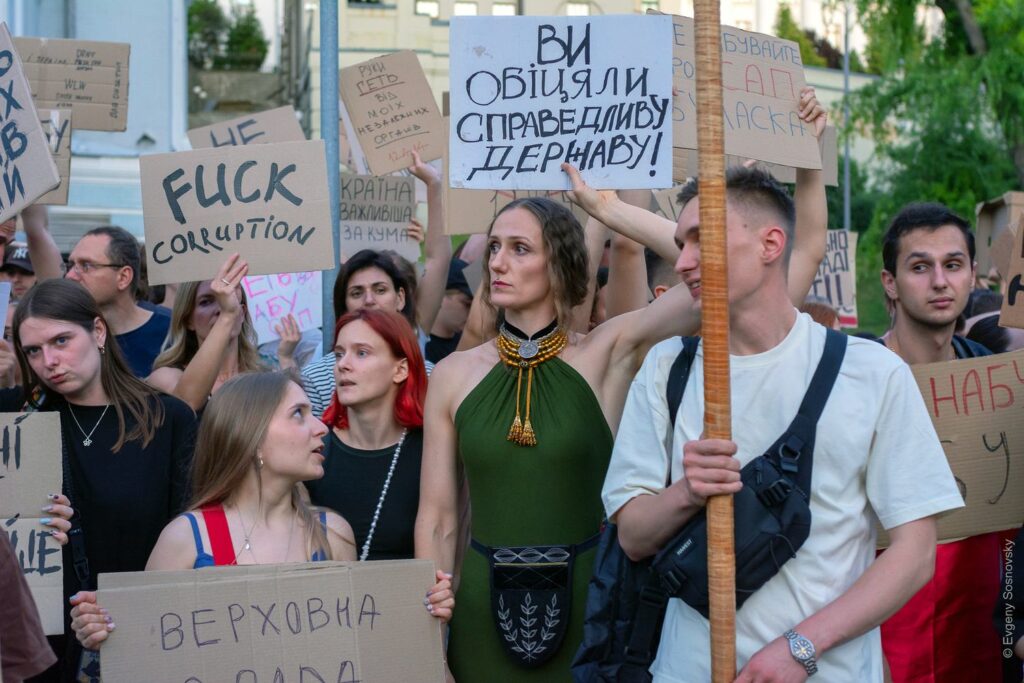
The contrast with Western youth movements couldn’t be more vivid. While American and European teenagers often target democratic institutions themselves—demanding to tear down systems they see as irredeemably corrupt—Ukrainian Gen Z fight to preserve and strengthen democratic institutions against authoritarian capture.
This difference reveals an ironic truth: Western youth don’t know how good they have it. They’ve never lived without independent courts, free press, or anti-corruption agencies. They can afford to attack these institutions because they’ve never experienced their absence.
Ukrainian twenty-somethings have gray hair at 16 and dead relatives in their family trees. They know exactly what happens when democratic institutions disappear. They are, actually, dying for a stab at a democratic future, not the one that Russia offers—where opposition figures end up dead or imprisoned, where corruption flows unchecked because there’s no independent oversight.
As veteran protester Ivan Chyhyryn, who lost his leg rescuing a wounded comrade, told reporters: “My parents were on Maidan in 2014 when I was very young. Creating independent anti-corruption institutions was one of their goals. What my parents fought for is now being thrown away.”
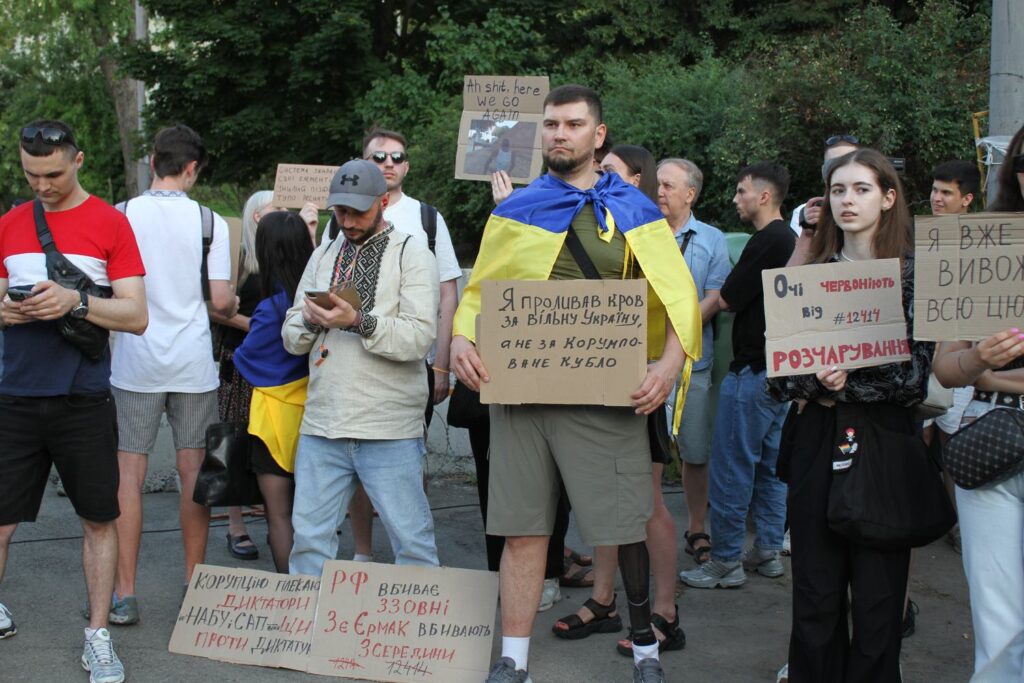
His generation inherited revolution in their DNA—the Orange Revolution in 2004, the Revolution of Dignity in 2014, and now resistance to democratic backsliding in 2025. But unlike previous generations who had to build democracy from scratch, these youth were defending institutions they’d grown up with.
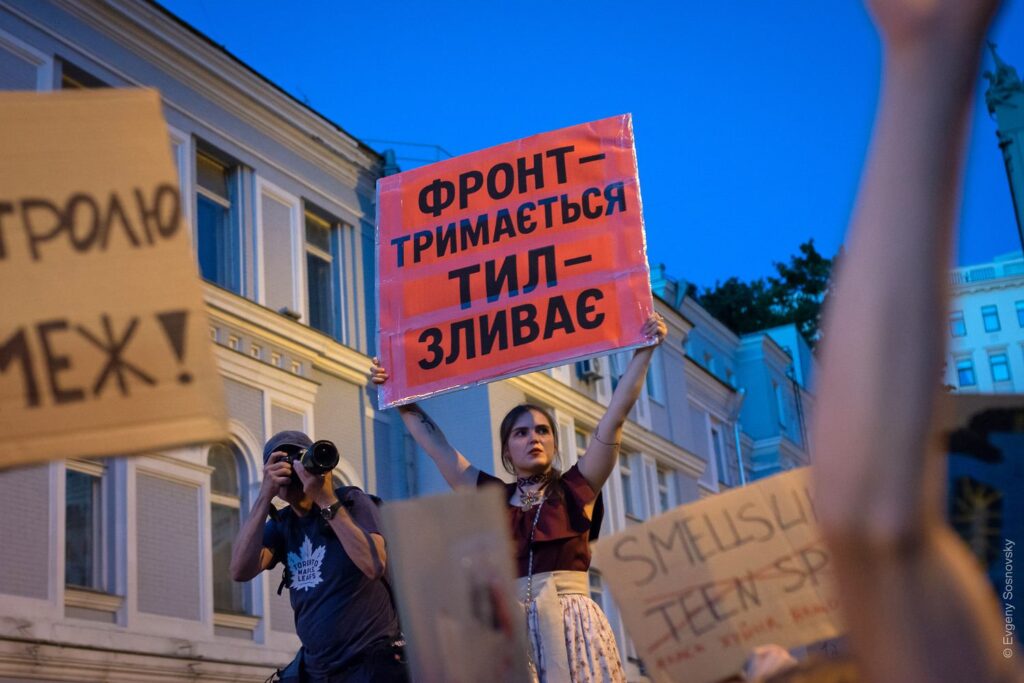
By Wednesday evening, Zelensky announced he would submit new legislation preserving anti-corruption agencies’ independence. “We heard the street,” he said—the same president who’d ignored international criticism and parliamentary opposition.
And this illustrated the main difference between Ukraine and Russia: Russian opposition complains it can’t change anything while Ukrainian teenagers flood the streets with “Fuck corruption” signs and win.
“I genuinely believe that if this happened in Russia, police would have just come in and beat everybody up,” Marco told Euromaidan Press. “In Ukraine, though, we really are freedom-loving and we will show the government that we are the ones in charge, not them.”
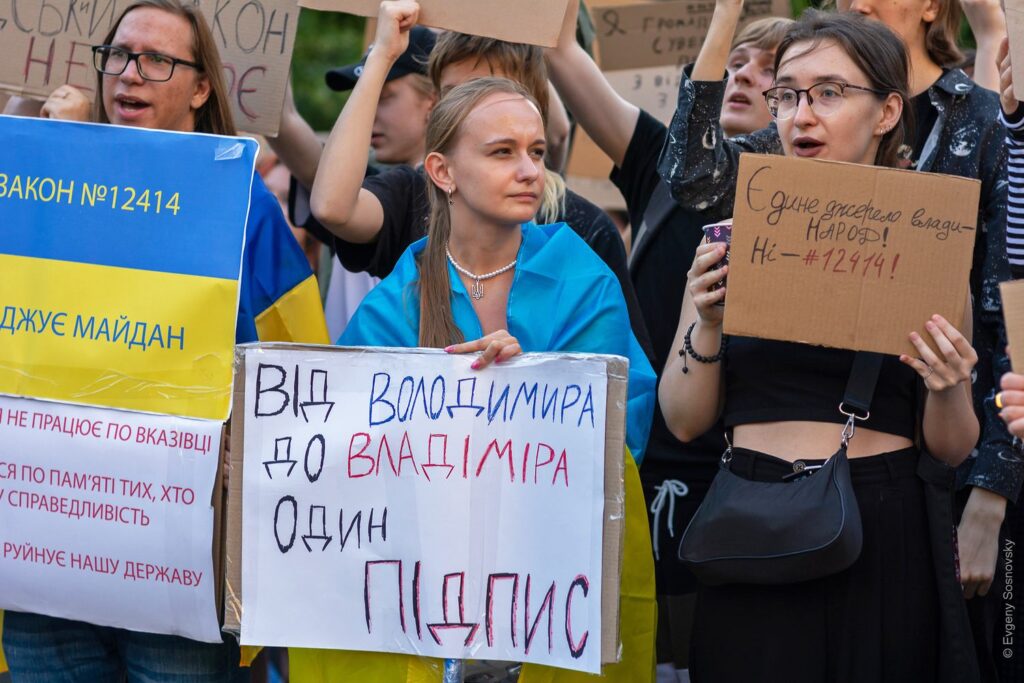
Even Russian independent media called these protests a “political crisis.” For Russians, street demonstrations represent a system breakdown. For Ukrainians, they represent the system working—checks and balances moving from the streets into the political fabric.
As protester Polina put it: “Only we can fight for our best future. That’s why we’re all here.”
Not bad for a generation whose main political tools are Twitter, Telegram, and magic markers.
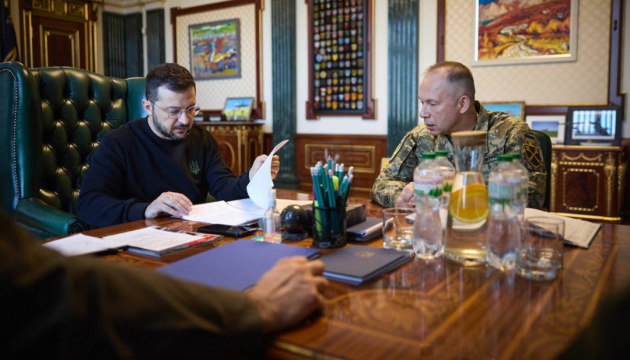

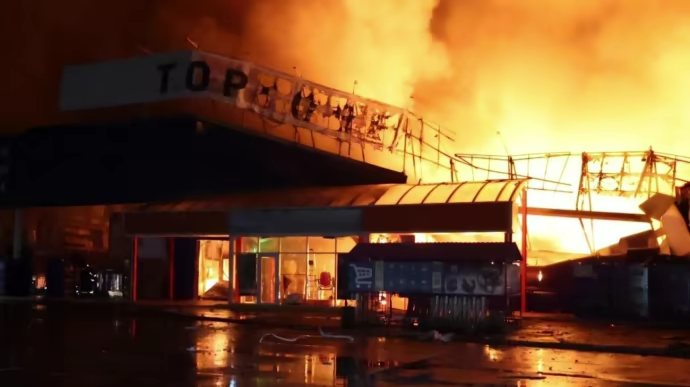

Ukraine’s response to recent Russian attacks on civilian cities will be swift. On 26 July, President Volodymyr Zelenskyy said the enemy will inevitably feel the consequences of their actions.
On the night of 26 July, Russian forces launched drones and missiles. Dnipropetrovsk, Kharkiv, and Sumy oblasts came under fire. Three people were killed in Dnipro, and six more were injured. Kharkiv endured three hours of relentless assault. The Russians used missiles, including ballistic ones, as well as attack drones.
The Ukrainian president stated that Russia will face retaliation for the killings.
Russia does not intend to end its war against Ukraine. On the contrary, Russian ruler Vladimir Putin has told US President Donald Trump that military actions will escalate during the summer offensive. In the first half of 2025, Russia killed or injured 6,754 civilians in Ukraine, the highest number for a six-month period since 2022.
“There are wounded as a result of the Russian strike. Unfortunately, there are also casualties. My condolences,” he wrote on Telegram.
He also emphasized: the response will be precise and daily.
“Russian military enterprises, Russian logistics, and Russian airports must feel that their own war has real consequences for them. The accuracy of our drones and the daily nature of Ukraine’s responses are among the arguments that will definitely bring peace closer,” Zelenskyy said.
Russia’s Defense Ministry justified the attack by claiming it targeted Ukrainian defense enterprises. In reality, the missiles hit residential buildings and an electronics repair store.
“The objective of the strike was achieved,” it reported.
Earlier, the Ukrainian Defense Intelligence said that a Su-27UB combat training jet caught fire overnight on 26 July in Russia. The incident happened at the Armavir airfield in Russia’s Krasnodar Krai, which lies more than 850 km from the Ukrainian border.
Ukraine’s Intelligence: Russian jet used to train war pilots suddenly bursts into flames in Krasnodar Krai
It is intended for training pilots for the war against Ukraine, while retaining the combat capabilities of the base aircraft: speeds of up to 2,500 km/h.
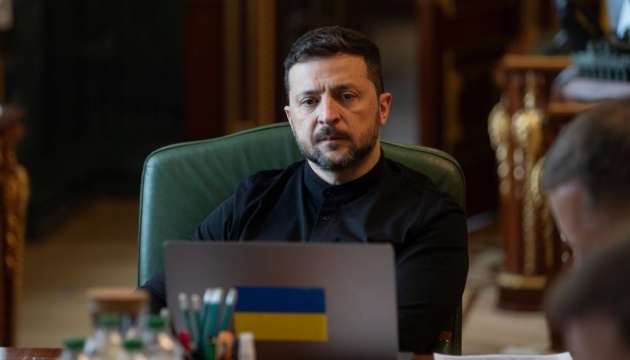

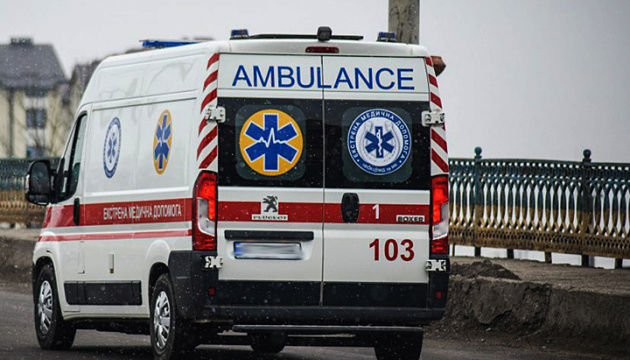

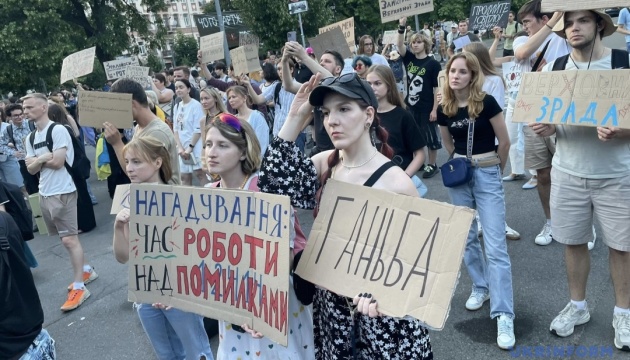

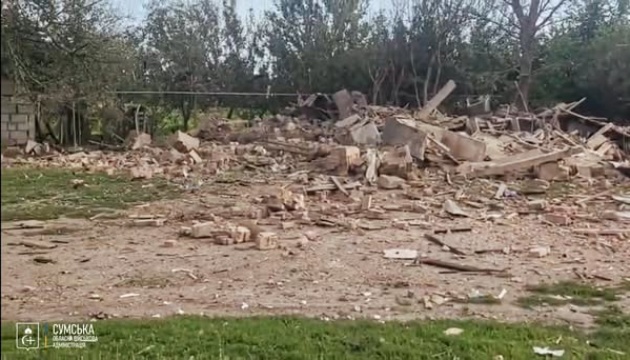

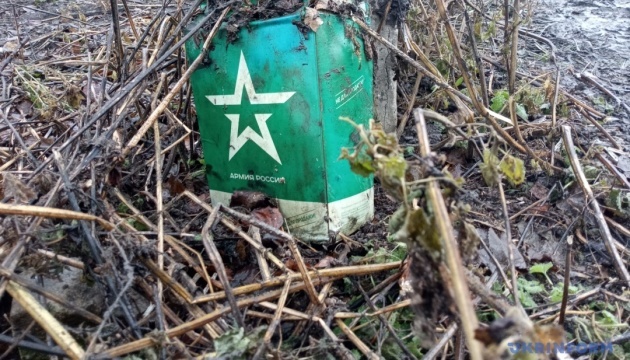



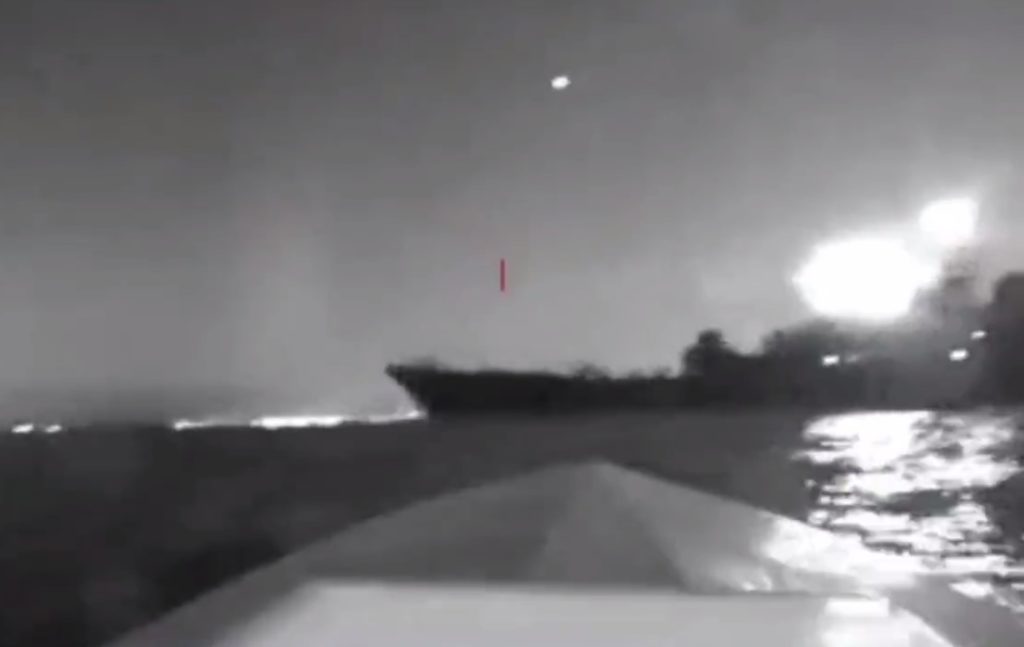

Russia has canceled its main naval parade of the year. Saint Petersburg has suspended the event scheduled for 27 July 27 in Saint Petersburg, the Center for Countering Disinformation under Ukraine’s National Security and Defense Council reports.
Since 2022, Ukraine has destroyed approximately 33% of the combat ships of Russia’s Black Sea Fleet. This includes about 24 ships. The most painful loss was the sinking ofthe cruiser Moskva, the flagship of the Russian fleet. In 2022, it struck Ukraine’s Zmiinyi (Snake) Island after Ukrainian border guards refused to surrender, famously declaring: “Russian warship, go f*** yourself!”
Due to the cancellation, the traditional passage of ships along the Neva River will not take place, and the salute from the Peter and Paul Fortress will remain a memory this year.
The Center for Countering Disinformation claims, “The Kremlin can no longer pretend that the war does not affect the Russian rear. The war impacts all spheres of life in Russia, even symbolic and loud events like the naval parade.”
The parade cancellation may be linked to the military leadership’s fears due to real losses suffered by the fleet. An event meant to demonstrate Russia’s power now risks having the opposite effect, causing discouragement and fear.
Against this backdrop, the decision to scrap and send Russia’s only aircraft carrier, Admiral Kuznetsov, to the scrapyard is particularly telling, further highlighting the problems of the Russian fleet.

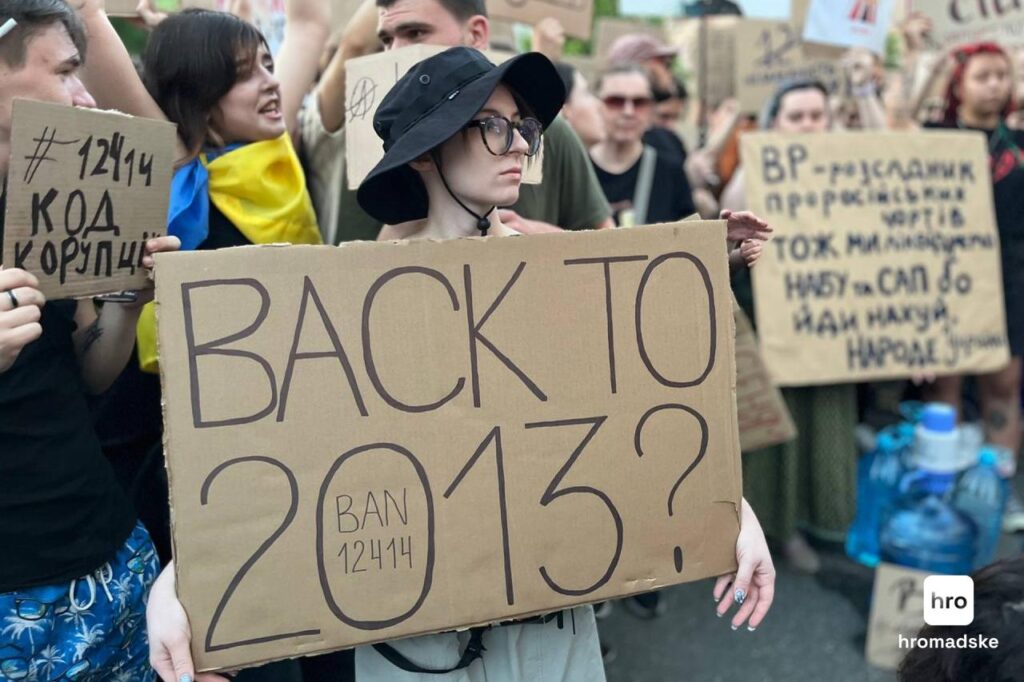

After a law limiting the independence of anti-corruption bodies came into effect, one of them, the National Anti-Corruption Bureau or NABU, announced the completion of investigations of long-term cases. Four high-profile criminal cases were closed in one week by the agency, Glavkom reports.
President Volodymyr Zelenskyy signed the law, curtailing the independence of NABU and the Specialized Anti-Corruption Prosecutor’s Office (SAPO) on 22 July. It requires key decisions by these institutions to be coordinated with the Prosecutor General’s Office.
This surge in anti-corruption activity coincided with a public statement by the new Prosecutor General, Ruslan Kravchenko, about his intention to intervene in certain cases that NABU had been investigating for years.
“In such cases, I will raise questions and possibly create a joint investigative group with other employees,” said Kravchenko.
For comparison: in January 2025, NABU did not report about the number of cases brought to a conclusion. According to the Center for Countering Corruption, the agency completed one in May and three in March, Texty reported.
Finally, NABU completed the investigation of one of the largest cases involving the embezzlement of over $225 million from PrivatBank before its nationalization. According to the investigation, the money was funneled through a scheme of fictitious loans registered to controlled entities.
The case involves six suspects, including oligarch Ihor Kolomoisky, who has been in custody since 2023.
Pavlo Kyrylenko, head of the Antimonopoly Committee, is charged with failing to declare significant property, including several apartments in Kyiv and Uzhhorod, a residential house of over 220 sq.m. near Kyiv, two land plots, two garage boxes, six parking spaces, three non-residential premises totaling over 190 sq.m., and a BMW X3 car. Additionally, a separate case regarding Kyrylenko’s alleged illegal enrichment amounting to over $1.75 million is under review and has already been transferred to the High Anti-Corruption Court.
Regional judges systematically issued fake rulings allowing men to avoid mobilization. The most common reason was the status of “sole parent.” According to the investigation, $3,500 was charged for such rulings. A total of 1,040 similar rulings were issued over the past year.
Another case was completed, and this time against an SBU officer who, according to the investigation, demanded $300,000 for destroying materials related to the illegal smuggling of men abroad. If refused, he threatened to initiate criminal prosecution under more serious charges.


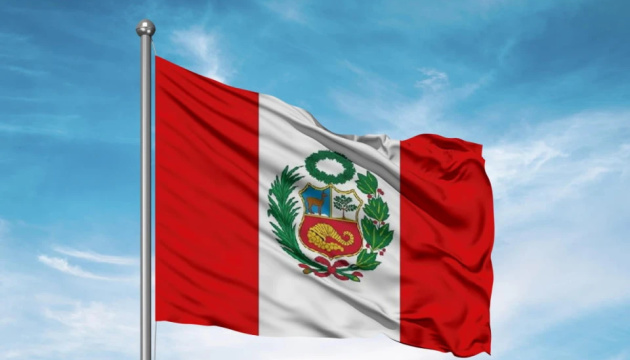

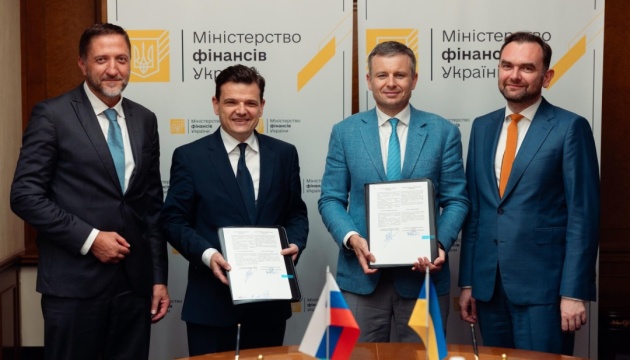

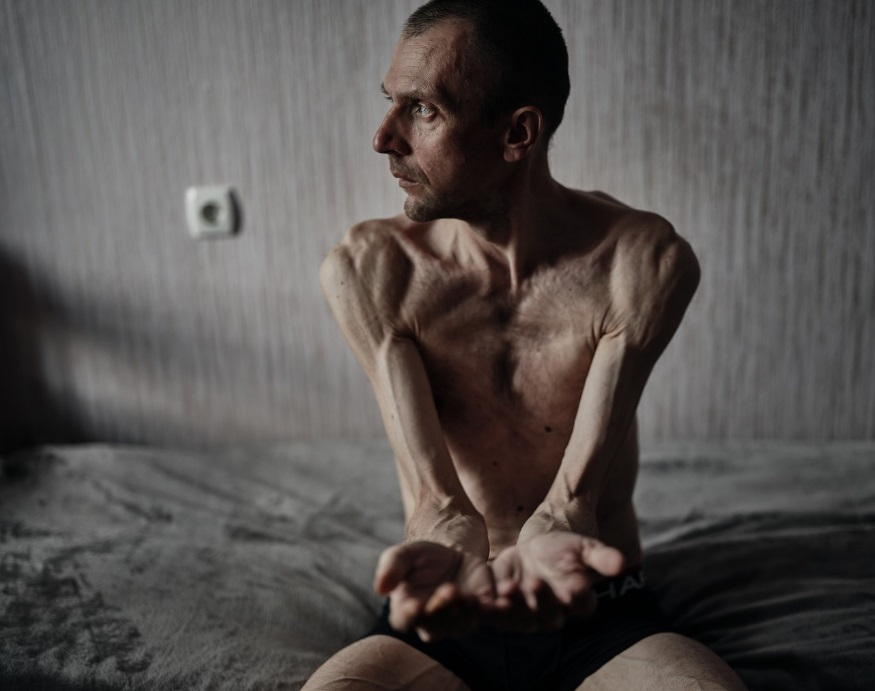

The world demands the truth. International response to Russia’s brutality is growing stronger, as the Netherlands and 40 other OSCE countries initiate an independent investigation into the torture of Ukrainian prisoners of war.
The investigation will be conducted under the OSCE’s Moscow Mechanism.
This mechanism a special formal procedure that allows OSCE participating states to establish short-term international expert missions to investigate human rights violations and humanitarian consequences in a specific region.
Since the start of Russia’s all-out war, this mechanism has been used to document war crimes, the deportation of children, torture of civilians, and widespread human rights violations, reports Ukraine’s Coordination Headquarters for the Treatment of Prisoners of War.
The new investigation will establish facts regarding the torture of Ukrainian POWs, and this evidence will become the basis for convictions in Ukrainian courts, the International Criminal Court, and a tribunal on the crime of aggression against Ukraine.
“He said we deserve genocide”: Journalists unmask Russian “Dr. Evil” torturer of Ukrainian POWs
“The Netherlands and its partner countries are working to uncover the truth and ensure accountability for Russia’s war crimes in Ukraine,” says Dutch Foreign Minister Kaspar Veldkamp.
As noted by Ukraine’s Coordination Headquarters for the Treatment of Prisoners of War, this process is critical to ensuring that no act of cruelty goes unpunished.
Previously, a special OSCE monitoring mission operated in Ukraine to observe the situation during Russia’s 2014 invasion of Donbas. In mid-2022, Moscow blocked the extension of the SMM’s mandate, and the mission ceased operations.
Since then, the OSCE has continued to support Ukraine through other programs, including an extra-budgetary assistance initiative, though without a direct monitoring presence in active combat zones.

© REUTERS
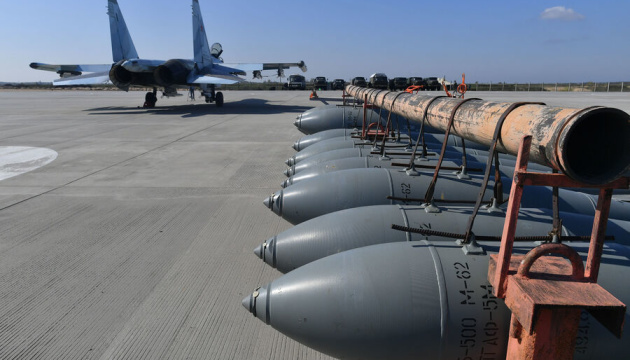


Officials say Russia launched 235 drones and 27 missiles in overnight attack - Zelensky vows Moscow would feel the consequences

© Reuters


The Ukrainian Defense Intelligence reports that Su-27UB combat training jet caught fire overnight on 26 July in Russia. The incident happened at the Armavir airfield in Russia’s Krasnodar Krai, which lies more than 850 km from the Ukrainian border.
Russia does not intend to end its war against Ukraine. On the contrary, Russian ruler Vladimir Putin has told US President Donald Trump that military actions will escalate during the summer offensive. In the first half of 2025, Russia killed or injured 6,754 civilians in Ukraine, the highest number for a six-month period since 2022.
The aircraft was a Su-27UB, a twin-seat training version of the Soviet multirole Su-27 fighter. It is intended for training cadets while retaining the combat capabilities of the base aircraft: speeds of up to 2,500 km/h.
The fighter jet can to carry both unguided FAB-250/500 bombs and guided bombs such as the KAB-500-OD and KAB-1500KR. On the front lines, such aircraft are also used for patrols, air cover, and precision strikes on Ukraine.
Moscow plans to increase the production of guided aerial bombs by 50%, to 75,000 units in 2025, by upgrading conventional munitions with planning and correction modules. The installation of the modules turns them into high-precision weapons with extended strike range.
Currently, Ukraine does not have a solution against such missiles. The most effective remains the destruction of fighter jects at airfields.
Following the explosion, local residents reported a loss of communication, which may indicate attempts to conceal the scale of the incident. Ukraine’s Defense Intelligence reminds: “Every crime against the Ukrainian people will be properly avenged.”
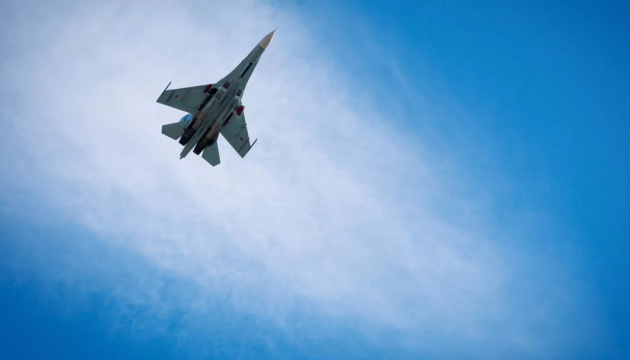

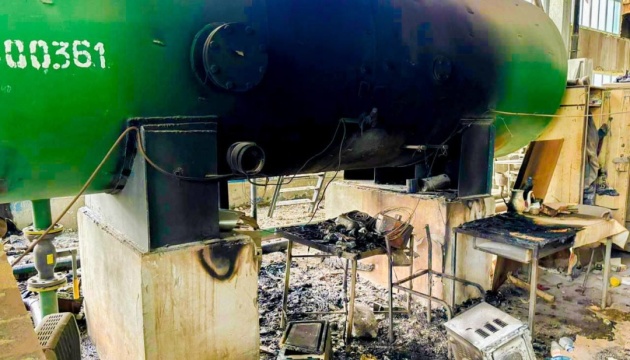

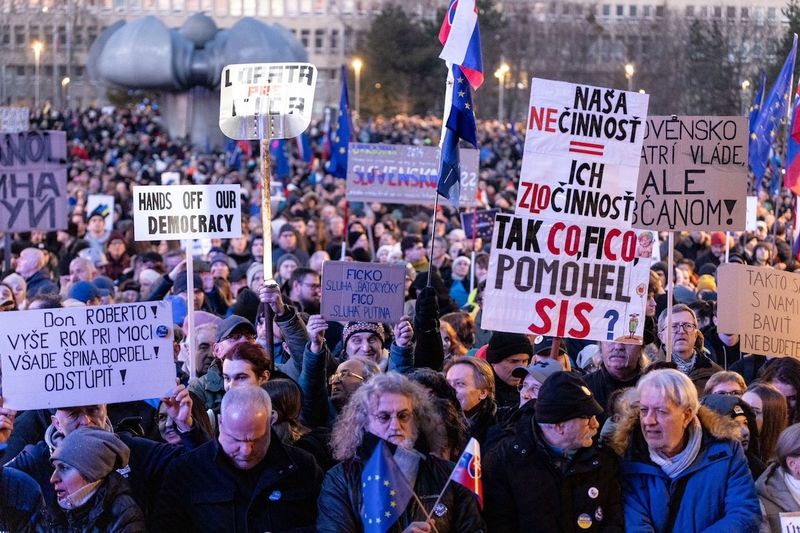

Unexpected results from a social survey have stunned observers. According to research by the SCIO agency in cooperation with the portal Rozhovory so Šimonom, 14% of Slovaks surveyed openly want to join Russia, and another 18% consider this possibility.
Prime Minister Robert Fico states that Slovakia will provide neither financial nor military support to Ukraine in its war with Russia. Additionally, Foreign Minister Juraj Blanár expressed the view that the West should forgive Russia for the killing of more than 13,000 civilians, not including Mariupol, where the number of victims could be as high as 100,000.
The idea is most supported by students and the unemployed, which, according to SCIO analyst Martin Klu, rather reflects economic instability and disappointment with the country’s Western course than genuine loyalty to the Kremlin.
Respondents were also separately asked about military neutrality. Here, 32.5% opposed neutrality if it led to a decline in living standards. Meanwhile, 15% support neutrality under any circumstances.
The least support for the ideas of “neutrality” and “Russian integration” is observed among people with higher education, urban residents, and citizens with above-average incomes. Analysts believe this is linked to the economic stability and better prospects of these groups.
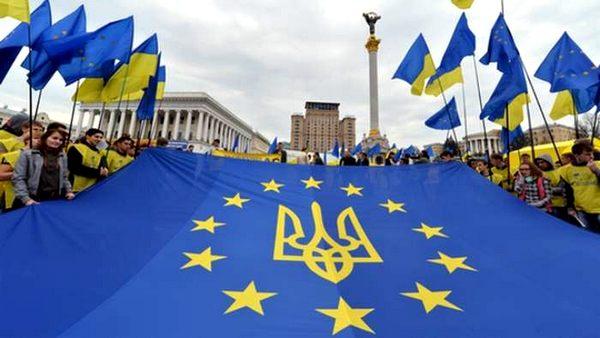

Ukraine will receive only part of the fourth tranche of financial assistance under the Ukraine Facility mechanism. The reason is the failure to implement three out of sixteen key reforms stipulated in agreements with the EU, says Guillaume Mercier, European Commission spokesperson, European Pravda reports.
The European Commission’s Ukraine Facility is aimed at supporting Ukraine’s state budget, encouraging investment and economic modernization, rebuilding critical infrastructure, supporting civil society, and helping the country to prepare for EU membership.
If Kyiv had implemented all 16 reforms, Ukraine would have received €4.5 billion. But according to Mercier, the European Commission assessed only 13 indicators as fulfilled, and therefore proposes a reduced tranche of €3.05 billion.
The three reforms that remain unfulfilled are:
Ukraine submitted a request to the EU for a partial payment back in June 2025.
The Ukraine Facility program envisions providing Ukraine with up to €50 billion over several years, conditional on the successful implementation of reforms. Each tranche is tied to specific steps.
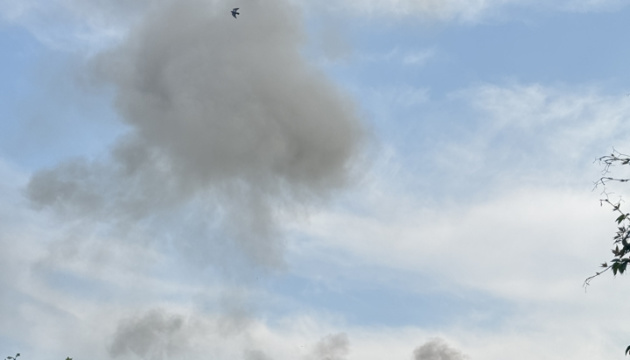

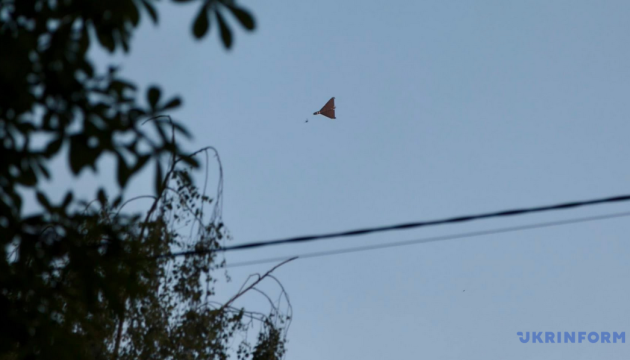

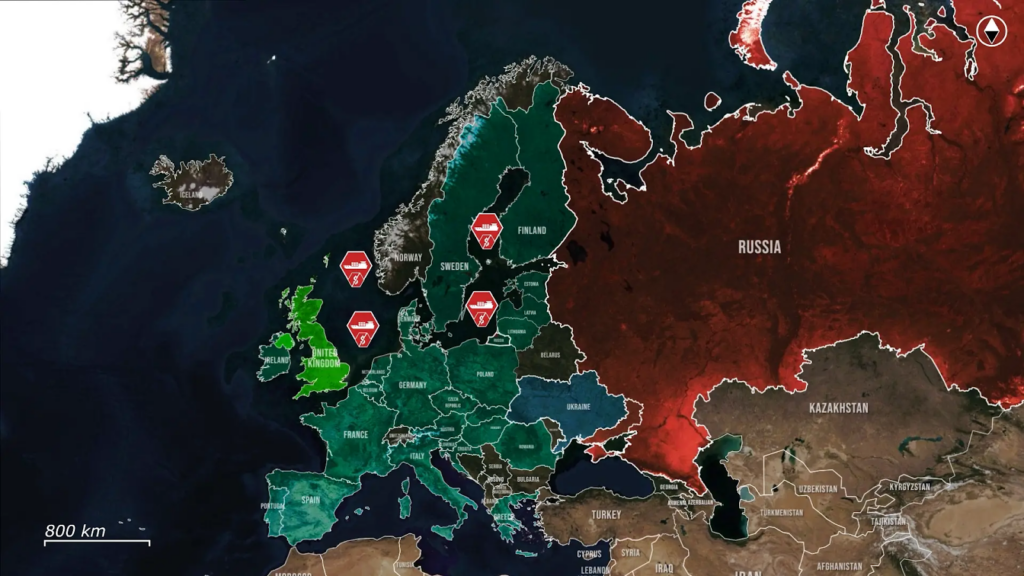

Day 1249
On 25 July, the biggest news comes from Europe.
New sanctions from the United Kingdom and the European Union are tightening the noose around Russia’s shadow fleet, the covert network of tankers that has long helped Moscow dodge oil export restrictions. This time, enforcement is not only more coordinated but also more surgical, and the effects are beginning to show across the broader infrastructure of Russia’s war economy.
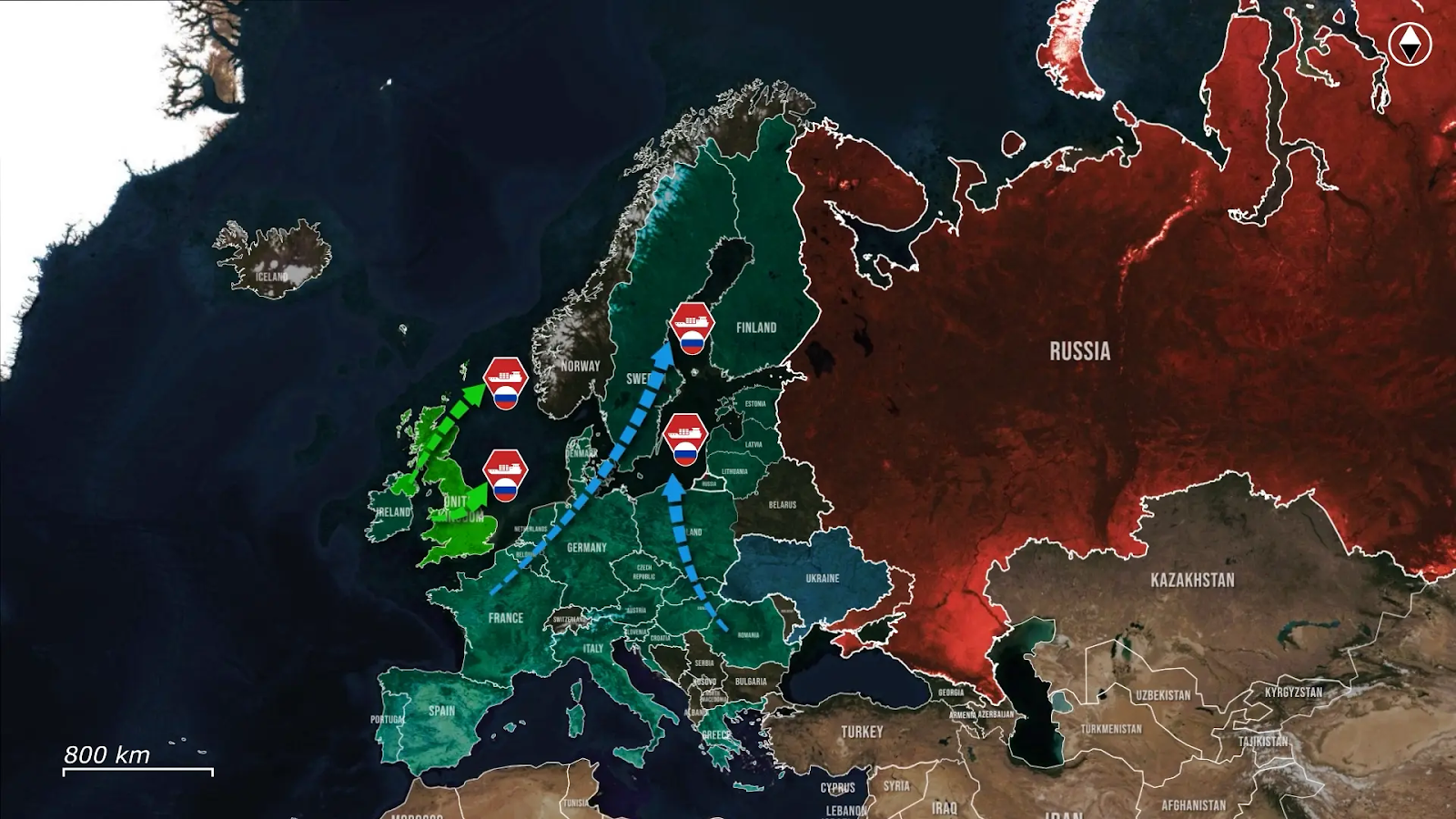
Most recently, the United Kingdom unveiled its latest sanctions package, which directly targets dozens of tankers suspected of transporting Russian oil in violation of the G7 price cap, operating under flags of convenience and obscure ownership structures to avoid detection. London has now imposed asset freezes on over 100 shadow fleet vessels and sanctioned several front companies that provide critical insurance, financing, and logistical support, embedded in global maritime hubs. Beyond targeting individual vessels, the UK’s restrictions also prohibit any UK-based companies from interacting with ships or firms linked to sanctioned oil trade, thereby closing off access to a broad range of legal and financial services that have long sustained the shadow fleet.
In parallel, the European Union has adopted its 18th sanctions package, with new measures aimed at undermining the legal and logistical foundations of shadow fleet operations. The package introduces enhanced penalties for any port offering services to re-flagged or disguised Russian tankers, creates a public blacklist of vessels involved in price cap violations, and extends sanctions to intermediaries that provide false documentation regarding the origin of cargo. Perhaps most importantly, the European Union now authorizes penalties against third-party countries, companies, and organizations that facilitate Russian circumvention efforts.
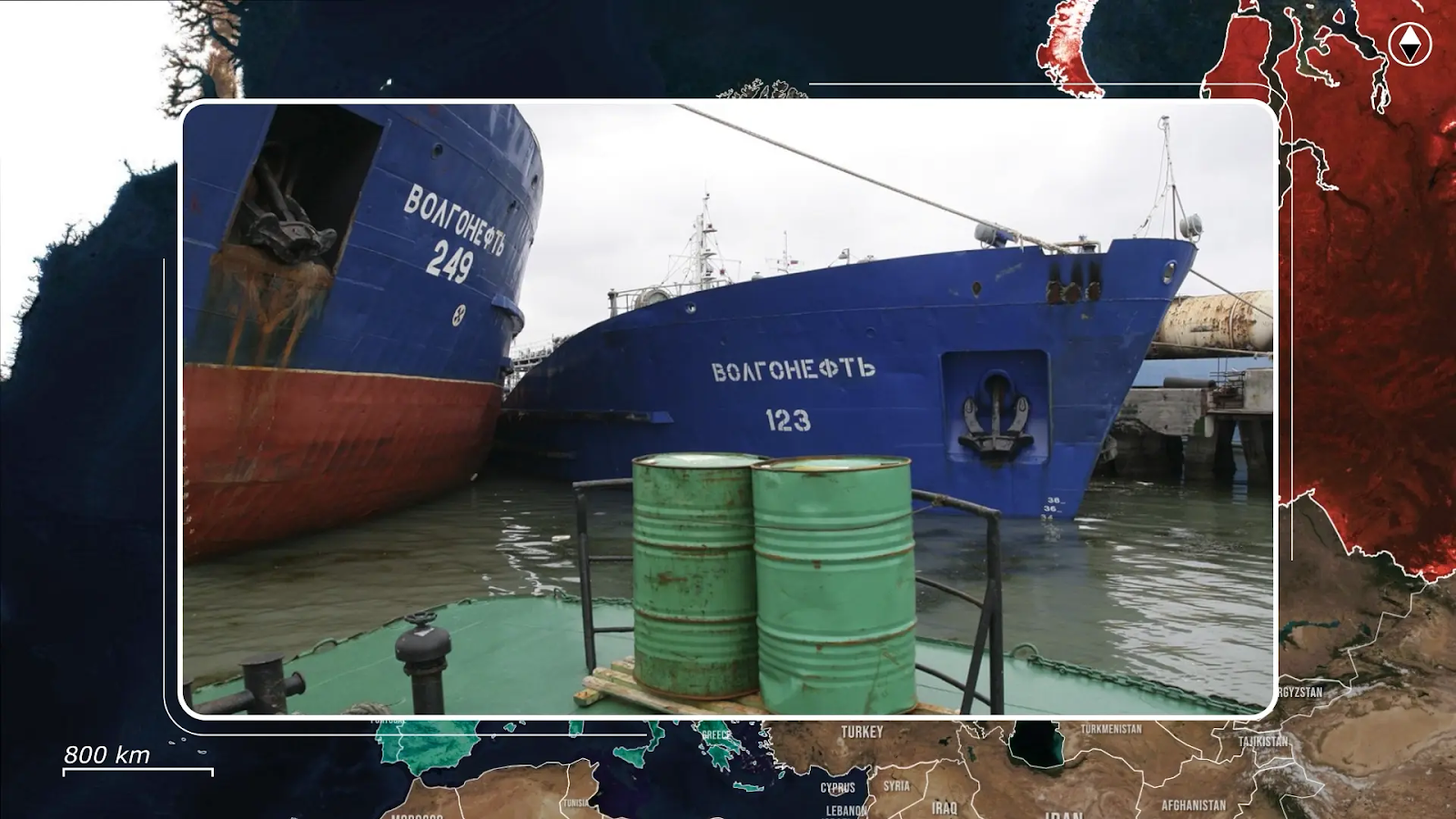
This move places significant pressure on states such as Türkiye and the United Arab Emirates, which have quietly hosted the fleet’s support infrastructure. Taken together, the actions of the United Kingdom and the European Union amount to the most comprehensive assault yet on Russia’s oil export system.
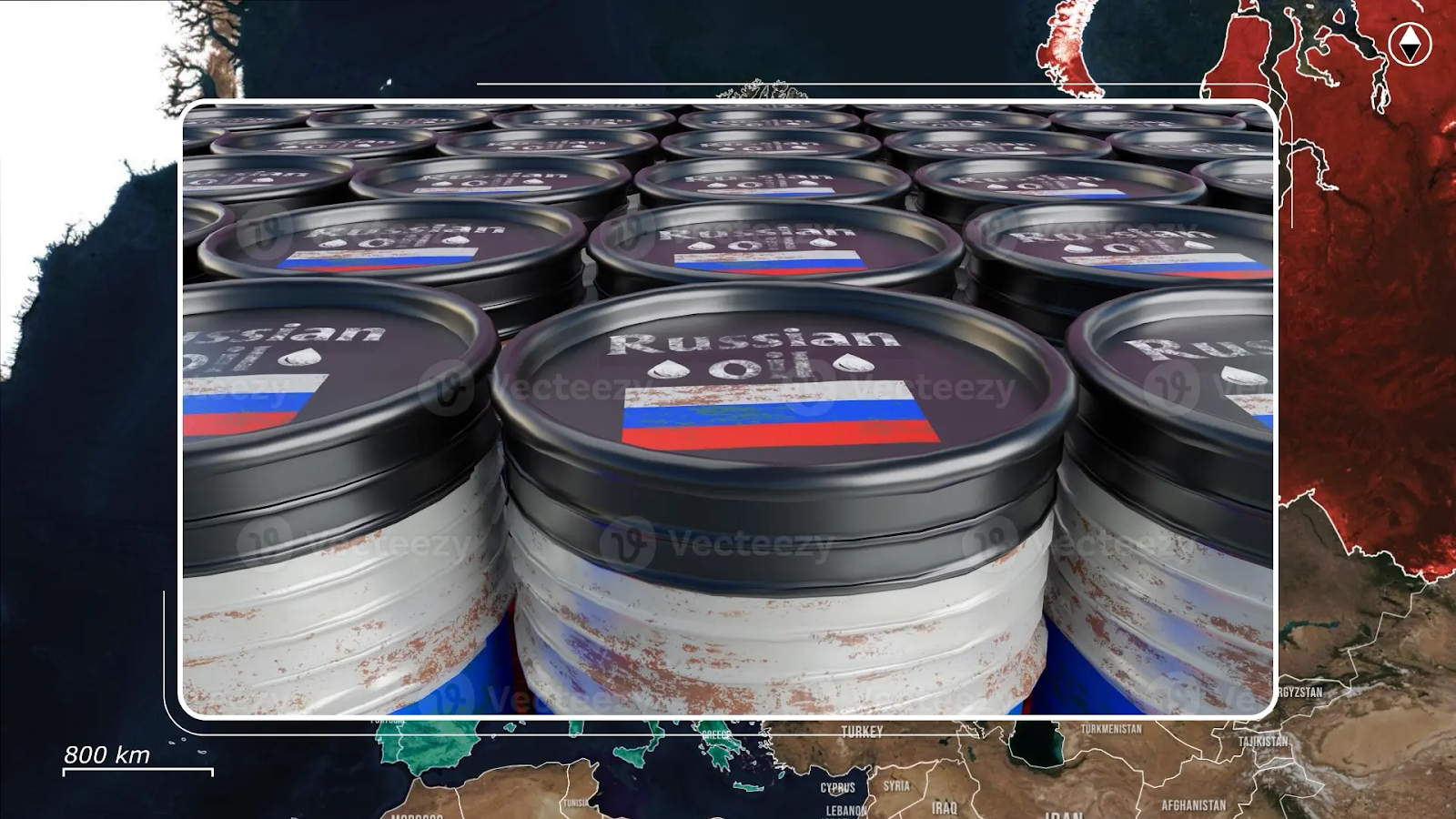
The effects of this crackdown are already being felt in the water. Earlier this year, a Russian-affiliated tanker docked in Belgium, and was only later identified as part of the shadow fleet, triggering internal reviews across European ports and prompting the introduction of stricter inspection protocols. Since that incident, insurance firms have come under increased scrutiny, maritime monitoring has intensified, and cooperation between European customs and naval forces has expanded. This makes it significantly harder for Russian tankers using falsified or re-flagged registrations to access European ports or services, forcing the fleet into riskier, longer, and more expensive trade routes.
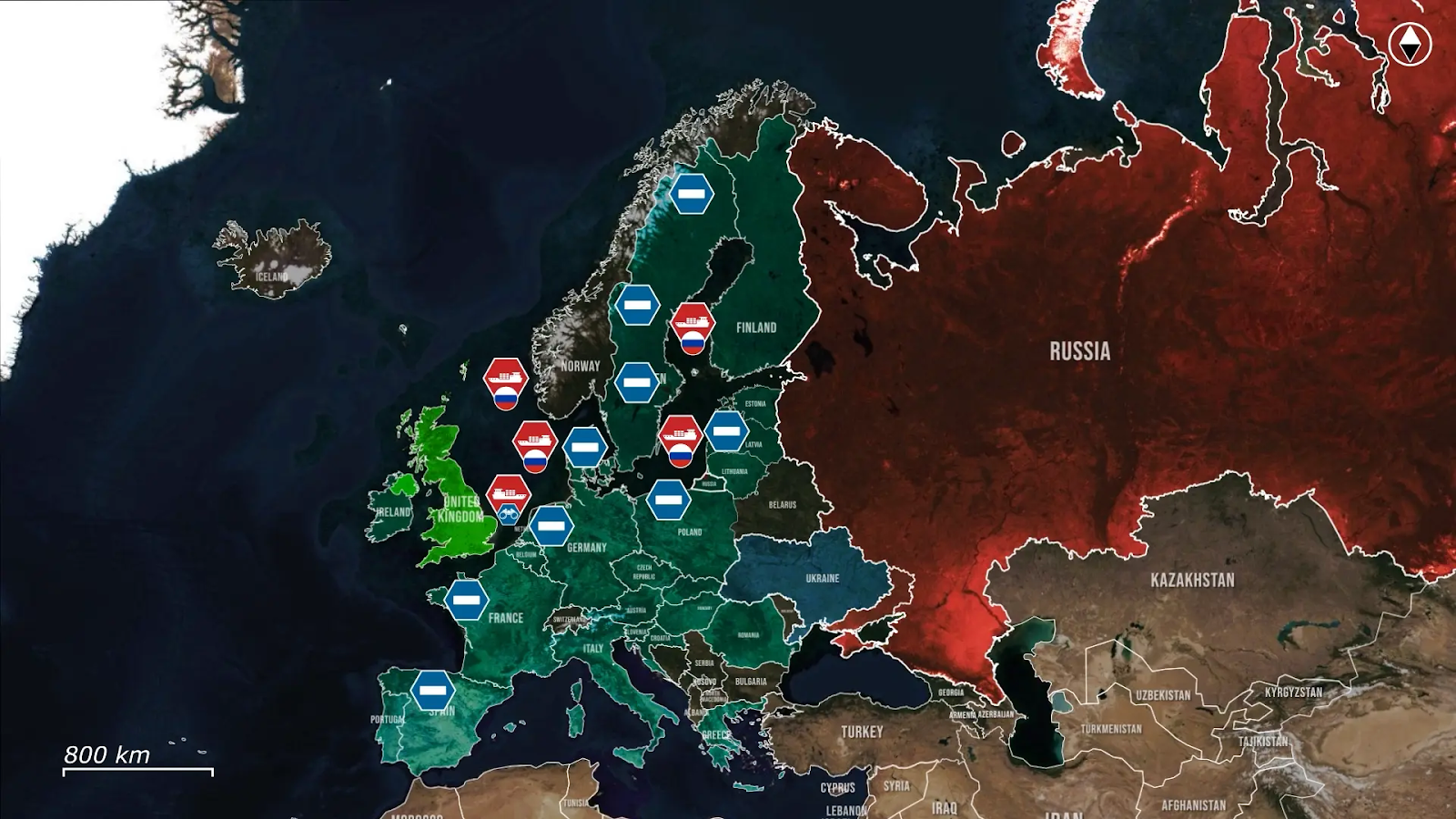
These constraints are showing the effect of a deeper financial crisis. Russia is no longer able to rely on stable dollar-denominated transactions and has instead turned to trading with strategic partners, paying Iran 104 million dollars in gold for Shahed drones and offering weapons and industrial components to North Korea in exchange for artillery shells and frontline soldiers. As covered in a previous report, the Kremlin has also resorted to using cryptocurrency and shell companies based outside of Russia to hide the nature of arms deals and payment transfers. These improvisations may help Moscow stay afloat in the short term, but they reflect how their economic system is losing access to hard currency and struggling to sustain even the most basic elements of war finance.
The geographic consequences are just as significant. With the Baltic Sea under increasing surveillance and the Black Sea heavily contested, Russia has shifted some of its shadow fleet activity to Arctic ports such as Murmansk; however, these are a last resort, as they remain ice-free for only seven to eight months of the year. Yet even these fallback routes are becoming less viable, as the United Kingdom and Norway have increased maritime patrols in the Barents and North Seas, regions where they maintain logistical and geographic naval advantages. The result is a tightening noose around the shadow fleet: as evasion options shrink and enforcement improves, Russia’s ability to maintain oil flows and convert the revenues into weapons faces a steadily rising cost curve.
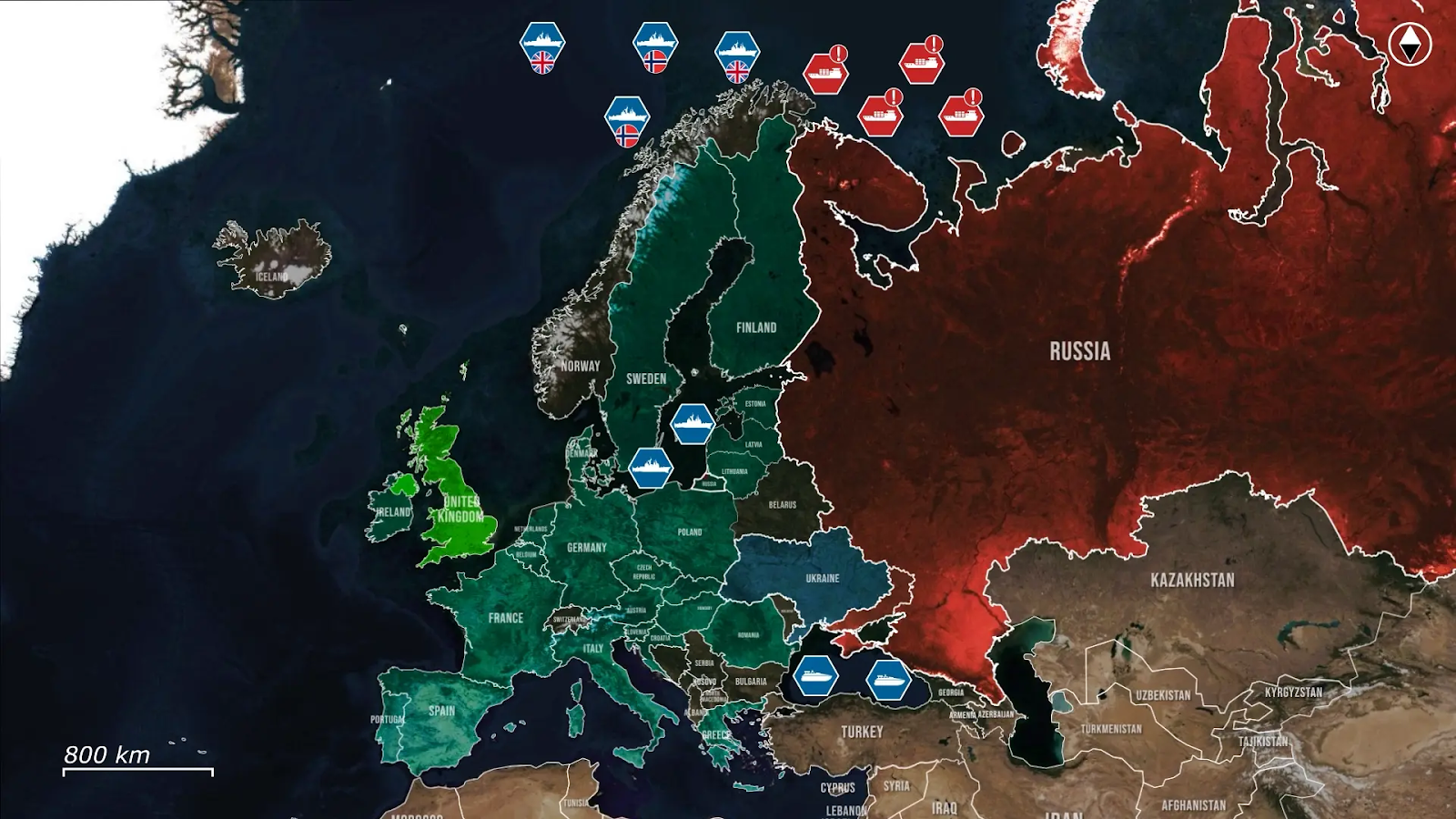
Overall, the clampdown on Russia’s shadow fleet marks a shift from symbolic pressure to systematic disruption. As enforcement expands from financial tools to maritime routes themselves, Moscow faces a narrowing horizon, where every export, workaround, and transaction becomes harder to hide, more expensive to maintain, and less capable of sustaining the war.
In our regular frontline report, we pair up with the military blogger Reporting from Ukraine to keep you informed about what is happening on the battlefield in the Russo-Ukrainian war.

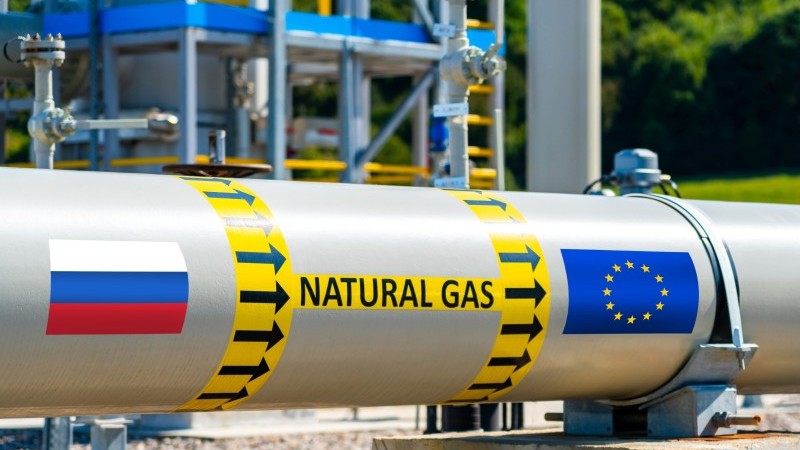

European Parliament lawmakers are pushing to accelerate the EU’s ban on Russian gas imports by one year, moving the deadline from January 2028 to January 2027, Reuters reported on 25 July.
The EU vowed to reduce its dependence on Russian gas following the Russian full-scale invasion of Ukraine. The bloc cut imports by more than half since 2022 through diversification to other suppliers and increased LNG (liquefied natural gas) purchases.
The recent proposal comes from deputies representing the Parliament’s largest political group, the European People’s Party, and the Greens, who favor a tougher stance than the European Commission’s June proposal.
Vaidere has also proposed requiring governments to impose penalties on companies that violate the ban, “potentially including by revoking licences for energy trading,” Reuters reported. Niinisto wants a full ban on Russian oil imports from January 2027, which the European Commission did not propose.
The European Parliament will vote in autumn to confirm its negotiating position with EU countries. The final measures require approval from both Parliament and a qualified majority of EU member states. It means that Hungary and Slovakia cannot block the decision despite their continued imports of Russian pipeline gas and opposition to EU-wide bans.
Under the Commission’s original proposal, the EU would begin phasing out Russian gas imports under new and short-term contracts from January 2026, with complete elimination by January 2028.
Russian gas supplied about 19% of Europe’s needs last year through the TurkStream pipeline and LNG shipments, down from roughly 45% before Moscow’s 2022 invasion of Ukraine. This share is expected to fall to 13% in 2025 as the EU works to end what it calls “decades-old energy relations with Europe’s former top gas supplier.”
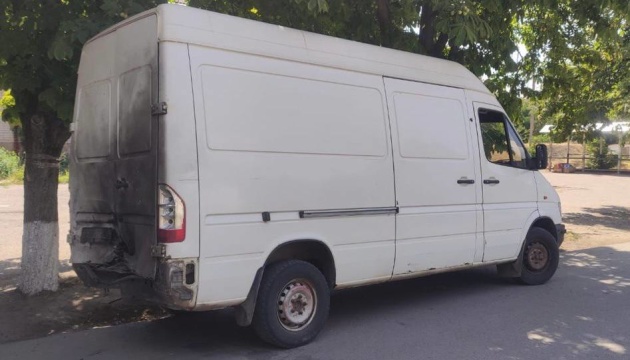

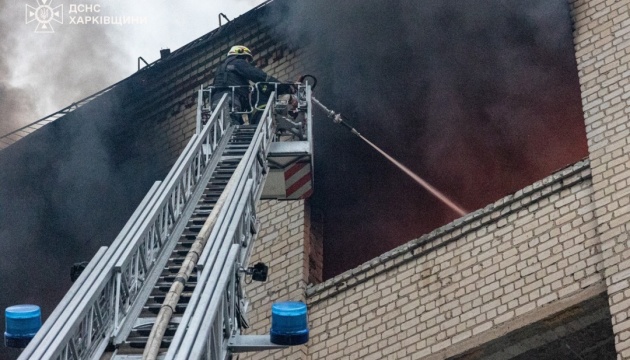

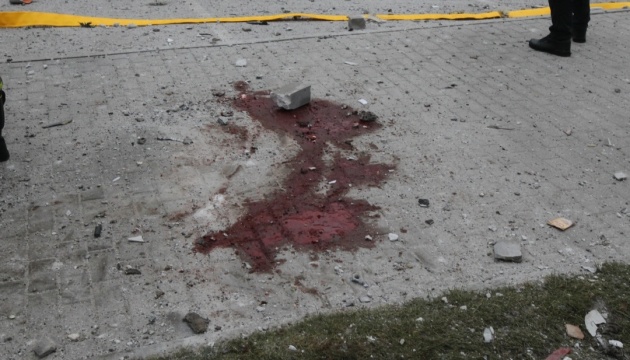

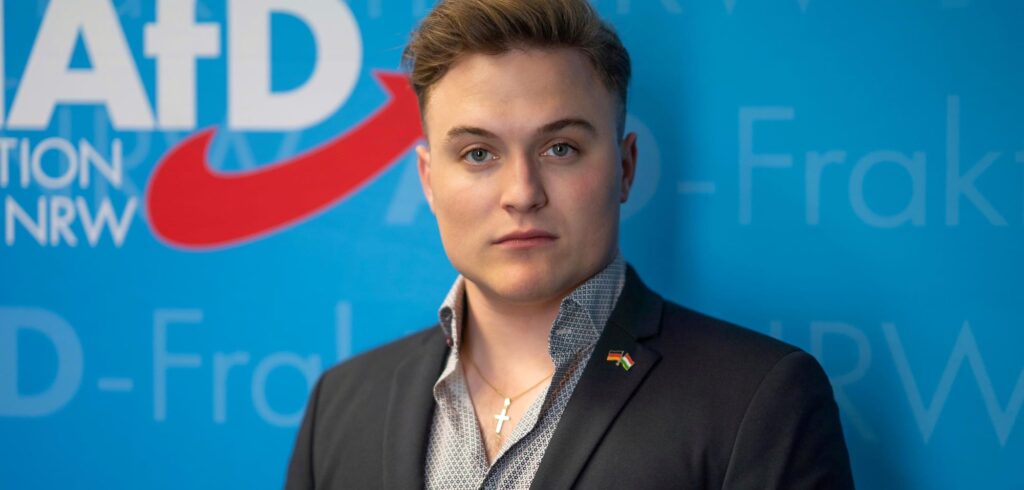

Tim Schramm, a 22-year-old deputy chairman of the Alternative for Germany (AfD) district association in Wuppertal, Germany, faces expulsion from the far-right party after serving as a volunteer in the Ukrainian army from March to June 2024, Welt reported on 23 July.
According to the German media, which obtained the exclusion application from the North Rhine-Westphalia regional leadership, Schramm is accused of “extremely party-damaging behavior.”
The application, authored by AfD European Parliament member Hans Neuhoff, seeks confirmation of the immediate withdrawal of Schramm’s membership rights, which the board has already decided by majority vote.
“By serving in the Ukrainian army and publicly commenting on his participation in combat operations, the respondent seriously violated the principles and order of the party, causing it significant damage,” the application reads.
Schramm told Nius portal journalists that he first visited Ukraine in 2022 when delivering humanitarian aid to the combat zone. At age 19, he attempted to join the International Legion of the Ukrainian army but was rejected. In late 2024, he tried again to join Ukrainian forces, this time “through connections,” as he explained, successfully entering the Territorial Defense Forces of Ukraine in a unit from Eastern Ukraine.
The young politician served as a mortar gunner and drone pilot, fighting against Russian forces.
“We shot, we were shelled, launched drones and were attacked by drones ourselves. I cannot say more for security reasons,” Schramm said.
During his frontline service, nobody from his party knew about his activities.
The regional board criticized Schramm for reporting about his mission “in a boastful manner” during interviews. T
he party maintains an “anti-interventionist line” and opposes arms deliveries to Ukraine. Leading AfD politicians “repeatedly emphasized that Germany should stay out of the Ukraine war.”
“Defending the free world alongside a European people is apparently already National Socialism for Hans Neuhoff. Neuhoff’s actions correspond to those of members of Putin’s party United Russia,” Schramm responded to accusations.
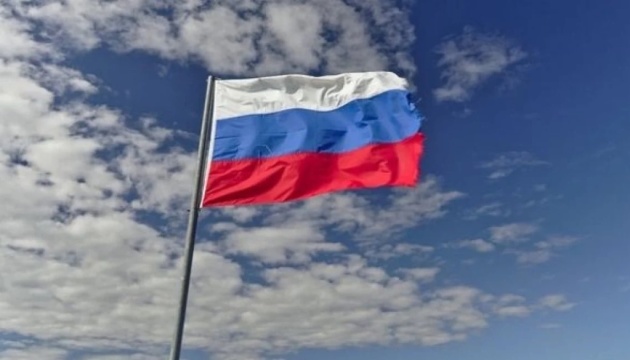

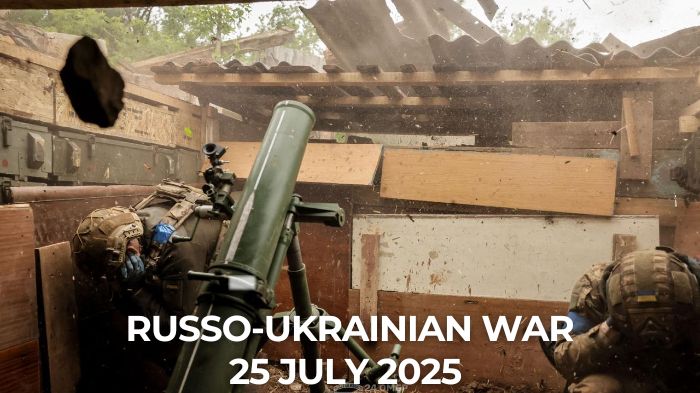

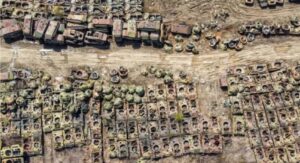 |
Russia’s last tank yards go dark as every inch in Ukraine demands more sacrifice. Russian workers are pulling the last Soviet tanks from storage yards that used to hold hundreds. The math is unsustainable. |
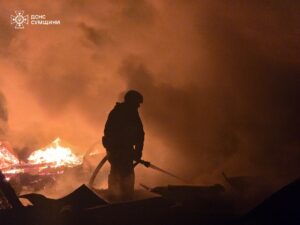 |
Russia built Ukraine’s drone storm over three years — 2025 is when it finally breaks. Russia’s drone war Ukraine’s allies thought they understood is about to change entirely — and Europe is not ready for what breaks loose in 2025. |
 |
Vacancies: News reporter, Defense tech reporter, Head of SMM. Euromaidan Press is expanding and searching for professional soulmates who believe in independent journalism. |
. The missile spoke louder than grief.
“Five in one trench, while enemy storming from three sides”: Ukrainian machine gunner survives deadly battle near Pokrovsk. Roman “Peugeot” and his unit survived a Russian assault in Donetsk Oblast.
Frontline report: Russian Sumy offensive stalls after repeated counterattacks drain manpower without territorial gains. Russian forces near the frontline faced critical manpower shortages with reserves either eliminated in previous failed assaults or positioned too far away to provide timely support.
Ukrainian hero saves 1,000 vehicles under fire — and surprises Bundeswehr instructor. Awarded for courage, Andrii now flies drones into enemy trenches while his daughter waits for him to come home.
Drone attacks span 10 Russian oblasts as Azot plant targeted for second time. Russian air defense intercepted 105 drones overnight as attacks hit the Nevinnomyssk Azot chemical plant, which supplies materials for artillery shell production, for the 2nd time in two months.
Russia once again finds way to evade Ukraine’s smartest defenses against its deadliest drones
. Russia has adapted again, forcing defenders into a new phase of drone warfare.
Ukraine to receive radars for Rheinmetall’s Skyranger 30 air defense gun system, which also guards Bundeswehr. The aid is a critical reinforcement as Russian missile and drone attacks hit record levels.
Ukraine’s cyber warriors crush Russian control systems in Crimea, steal 100TB of secrets. A covert cyber assault crippled occupation networks, downloaded troves of classified data, then wiped everything clean.
Zelenskyy: Ukraine has agreements on 3 Patriot systems, but needs a dozen. Germany will fund two Patriot systems and Norway will pay for a third.
Ukraine wants to sell $ 10-30 bn worth of drones to the US – Zelenskyy. President Volodymyr Zelenskyy said that Donald Trump has agreed to purchase Ukrainian-manufactured drones through contracts potentially worth up to $30 billion, marking a shift in defense trade between the two nations.
Ukraine receives $ 399 mn radar package from German defence contractor HENSOLDT. Ukraine will receive radar systems capable of tracking 1,500 simultaneous targets across a 250-kilometre range under one of the largest single military technology orders since the war began.
UN sounds alarm: Nearly 70% of funding to help millions of Ukrainians is lacking. Despite escalating war and mounting civilian suffering, the UN has secured just 34% of its $2.6 billion aid target for Ukraine in 2025.
NATO’s new chief in Europe arrives in Kyiv, with frontline defense and Patriot systems in focus. NATO’s newly appointed commander in Europe, General Alexis Grinkevich, arrived in Kyiv on 25 July to meet Ukraine’s top military leadership.
Only 1 in 3 Americans back Trump’s Ukraine policy amid broader disapproval – poll shows. Support for President Trump’s handling of Ukraine has dropped to 33%, part of a broader decline that has pushed his overall approval rating to a second-term low of 37%, according to new Gallup polling data.
Polish FM Sikorski warns Zelenskyy: “Worst thing” would be abandoning anti-corruption fight. Polish Foreign Minister Radosław Sikorski warned Ukrainian President Volodymyr Zelenskyy that abandoning anti-corruption efforts would be his “worst” possible decision, as Ukraine grapples with threats to its key investigative agencies’ independence.
Zelenskyy dismisses “fake” reports of Ursula von der Leyen call over anti-corruption law. Ukrainian President denied media reports claiming European Commission President Ursula von der Leyen expressed concerns to him about legislation weakening anti-corruption agencies, calling such reports “fake” during a press meeting.
Russia rains fire on Ukraine daily — even Trump’s deadline has not stopped bloodshed. “There is no safe place in Ukraine today,” the UN warned, as Russia’s relentless bombardment pushed civilian casualties to their highest in years.
Mine nearly ended Ukrainian female medic’s life, but she fought tougher war within — and chose harder fight. After the blast nearly tore her apart, Nataliia Vysotska faced a more brutal fight inside: to stay down, or rise again.
Russian provocateurs try to spark anti-Zelenskyy revolution—Ukrainian media sees through operation immediately. Real protesters demanded institutional accountability; fake ones called for regime change.
Ukraine’s Parliament sets day for consideration of Zelenskyy’s bill on independence of anti-corruption agencies. Nine days after triggering nationwide protests by subordinating Ukraine’s top anti-corruption agencies to the prosecutor general, parliament reportedly will vote on 31 July on President Volodymyr Zelenskyy’s bill to restore their independence
Read our earlier daily review here.
You could close this page. Or you could join our community and help us produce more materials like this.
We keep our reporting open and accessible to everyone because we believe in the power of free information. This is why our small, cost-effective team depends on the support of readers like you to bring deliver timely news, quality analysis, and on-the-ground reports about Russia's war against Ukraine and Ukraine's struggle to build a democratic society.
Become a patron or see other ways to support.


A BBC Russian investigation has documented the deaths of at least 245 eighteen-year-old Russian contract soldiers in Ukraine between April 2023 and July 2025.
This followed Russian President Vladimir Putin’s repeated claims that no 18-year-olds would be sent to fight.
The deaths occurred after Russia quietly dropped restrictions in April 2023 that previously required men to complete at least three months of conscript service before signing military contracts. Now any 18-year-old who has finished school can enlist directly as a contract soldier.
The BBC investigation, part of an ongoing project using open sources to count Russia’s war dead, found that most of the 245 identified soldiers joined the armed forces voluntarily, based on published obituaries. The real numbers are likely higher since not every death is publicly reported.
Russia has avoided national mobilization by offering substantial financial incentives to volunteers, particularly attractive to those in poorer regions with limited job prospects. The military recruitment now extends directly into schools and colleges.
Since the full-scale invasion began, teachers have been legally required to hold classes about the “special military operation.” Military recruiters attend career lessons, and a new subject called “The Basics of Safety and Homeland Defence” was introduced in September 2024, teaching students to use Kalashnikov rifles and hand grenades.
The investigation revealed that since the start of the full-scale invasion, at least 2,812 Russian men aged 18-20 have been killed in Ukraine. By late July, the BBC had established names of 120,343 Russian soldiers killed during the war.
Military experts estimate this represents 45-65% of actual deaths, suggesting total Russian military fatalities could range from 185,143 to 267,500.
In Ukraine, the minimum conscription age is 25, five years higher than Russia’s recruitment threshold.


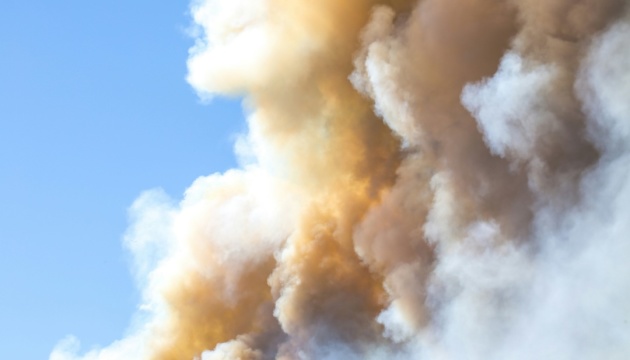

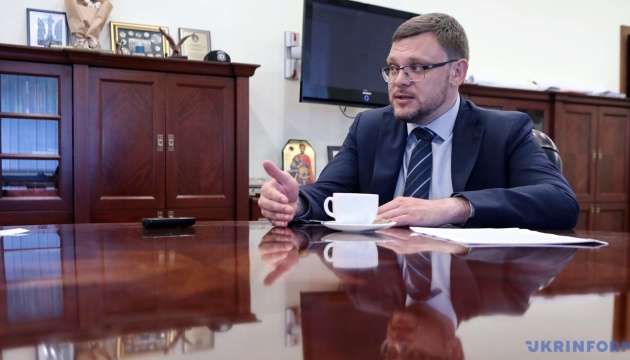

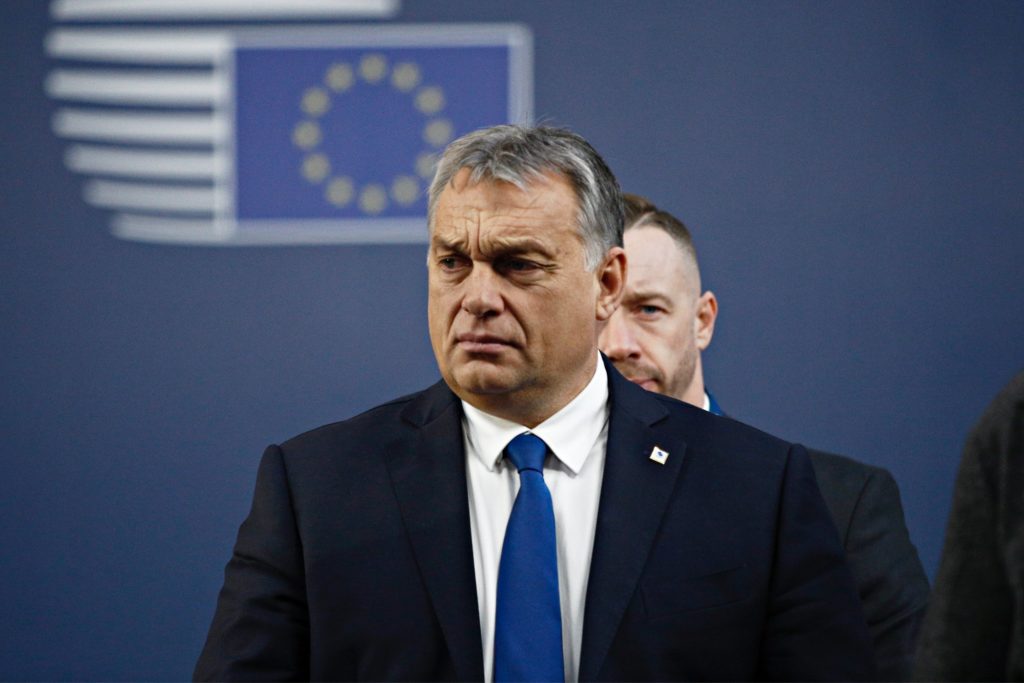

Hungarian Prime Minister Viktor Orban on 25 July proposed “strategic cooperation” with Ukraine instead of full European Union membership, arguing that Kyiv’s EU accession would bring the war with Russia directly into Europe’s core.
The Hungarian government, widely viewed as the EU’s most pro-Russian leadership, has blocked or delayed military aid to Ukraine, maintained ties with Russian President Vladimir Putin, and repeatedly echoed Kremlin narratives regarding the war.
“EU membership for Ukraine would drag the war into the heart of Europe, a risk our families should not have to face,” Orban wrote on X. “These times call for calm judgement, not theatrical threats.”
The Hungarian leader outlined his country’s alternative approach as “pragmatic, flexible, and rooted in mutual interest — not irreversible integration.” This position puts Hungary at odds with 26 other EU member states, which on 26 July declared support for continued accession talks with Ukraine and agreed to consider the European Commission’s assessment that Ukraine is ready to open the “Fundamentals” cluster of negotiations.
Orban characterized Ukraine as a “buffer state” and drew parallels to Hungary’s Cold War experience.
The Hungarian government has cited domestic opposition to Ukraine’s EU membership as justification for its stance. In a national consultation announced 26 June, Budapest claimed 95% of participants rejected Kyiv’s accession. Orban publicly voted against Ukrainian membership and shared a photo of his ballot in April.
However, the poll’s credibility faced scrutiny. Opposition leader Peter Magyar dismissed the consultation as a “government propaganda campaign” and cited internal data from Magyar Posta indicating only 3-7% of mailed ballots were returned.
Telex reported that the voting system could be manipulated, with testing showing users could vote twice using different email addresses.
Ukraine applied for EU membership shortly after Russia’s full-scale invasion in February 2022 and received candidate status within months. As an EU member, Hungary holds veto power over Ukraine’s accession progress.
Earlier in July, Orban claimed that most EU countries would vote against Ukrainian membership if “national referendums” were held, similar to Hungary’s consultation. Political director and advisor to Orban, Balazs Orban, recently stated that Ukraine’s war against Russia is not fought for Hungary’s security.
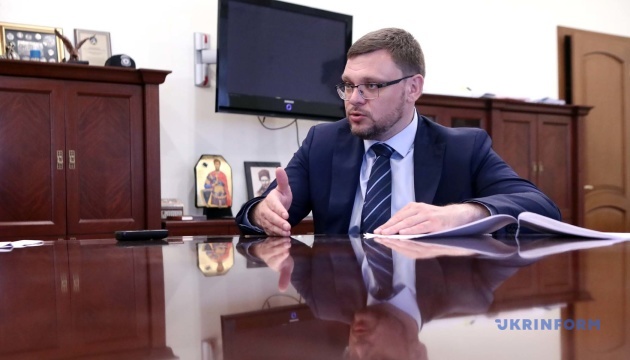

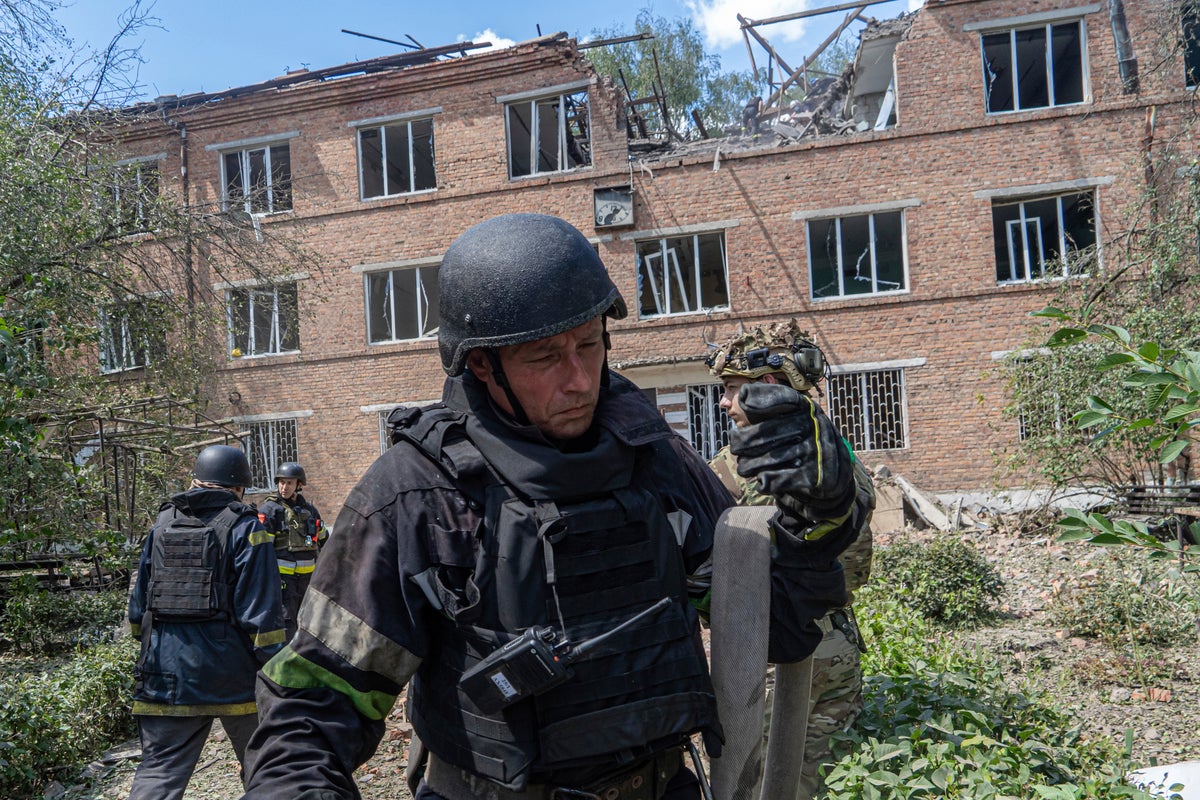

© Copyright 2025 The Associated Press. All rights reserved
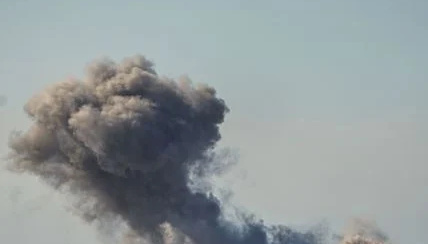

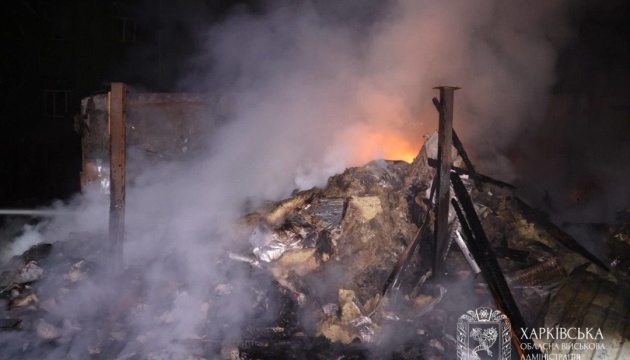

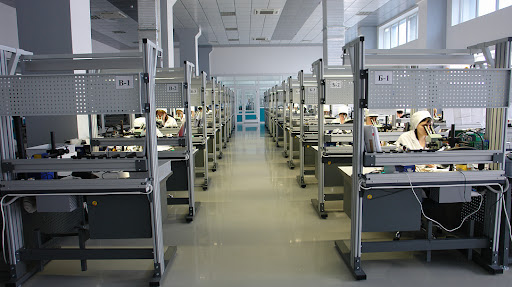

Ukrainian Security Service long-range drones struck the Signal plant in Russian Stavropol on 26 July, targeting one of Russia’s largest radio electronics manufacturers, hromadske reported, citing a source in the Security Forces.
One of the strikes reportedly hit building No. 2 (workshop No. 5), where” expensive imported equipment is located — machine tools based on numerical program control,” the source told hromadske.
The second strike was recorded in building No. 1, which houses workshop No. 17 for radio electronic devices.
The Signal plant specializes in producing various types of electronic warfare systems, radar, radio navigation equipment, and remote control radio equipment for Russia’s military-industrial complex. The facility operates under international sanctions.
The targeted workshops house critical infrastructure for military production: from imported machinery with numerical program control systems to radio electronic devices essential for military communications and navigation systems.
Russia’s Defense Ministry reported intercepting 54 unmanned aircraft overnight on 26 July across five oblasts, as well as over temporarily occupied Crimea and the Azov and Black Seas. By morning, Russian forces claimed to have downed six additional drones over North Ossetia and Moscow Oblast.
The attack represents a significant strike on Russia’s defense manufacturing capabilities, targeting a facility that produces electronic warfare equipment and radar systems used by Russian forces.


Elon Musk ordered the shutdown of Starlink internet coverage near Kherson during Ukraine’s counteroffensive in September 2022, disrupting military operations and preventing Ukrainian forces from surrounding Russian positions, according to three sources familiar with the command, Reuters reported on 25 July.
Kherson was occupied by Russian forces on 2 March 2022, and Ukraine launched its counteroffensive to retake the oblast on 29 August 2022. Kherson city and the entire right bank of the Dnipro River of Kherson Oblast were de-occupied by Ukrainian forces on 11 November 2022. The de-occupation encompassed all territory west of the Dnipro River in Kherson Oblast, including the city of Kherson itself; areas east of the river remained under Russian control.
According to Reuters, when Ukrainian troops attempted to reclaim territory from Russian forces, Musk instructed a senior SpaceX engineer to cut service in the strategic region north of the Black Sea. The order affected at least 100 Starlink terminals and extended to other Russian-occupied areas including parts of Donetsk province.
“We have to do this,” Michael Nicolls, the Starlink engineer, told colleagues upon receiving Musk’s directive, according to one source. Company staff complied with the order, causing hexagon-shaped cells to go dark on internal coverage maps.
The shutdown created immediate battlefield consequences for Ukrainian forces. Troops faced communications blackouts, surveillance drones lost connectivity, and artillery units struggled to target Russian positions without Starlink’s guidance systems. Ukrainian military officials and advisors confirmed the service failures occurred near front lines during the counteroffensive.
“The encirclement stalled entirely,” a Ukrainian military official told Reuters. “It failed.” The source said Ukrainian forces were unable to surround Russian positions in Beryslav, east of Kherson’s administrative center, due to the communications breakdown.
Despite the setback, Ukraine’s counteroffensive ultimately succeeded in reclaiming Beryslav, Kherson city, and additional occupied territory. However, the shutdown represents the first documented instance of Musk actively cutting Starlink coverage over an active battlefield during the war.
The decision “shocked some Starlink employees and effectively reshaped the front line of the fighting, enabling Musk to take ‘the outcome of a war into his own hands,'” according to another source.
Musk’s intervention contradicts his previous public statements about Starlink operations in Ukraine. In March, he wrote on X: “We would never do such a thing.”
This incident differs from a previously reported September 2022 case near the Black Sea, where CNN reported that Musk disabled Starlink near occupied Crimean coastline to prevent Ukrainian attacks on Russian naval forces.
Neither Musk nor Nicolls responded to Reuters requests for comment. A SpaceX spokesperson called the reporting “inaccurate” and referenced a company post stating “Starlink is fully committed to providing service to Ukraine.” The spokesperson did not specify inaccuracies or answer detailed questions about the incident.
Ukrainian President Volodymyr Zelenskyy’s office and the Ministry of Defence did not respond to requests for comment, according to the report.
Musk said, during a clash with Polish Foreign Minister Radosław Sikorski on X, that,“No matter how much I disagree with the Ukraine policy, Starlink will never turn off its terminals.” He claimed that without it, Ukraine’s “entire front line would collapse.”


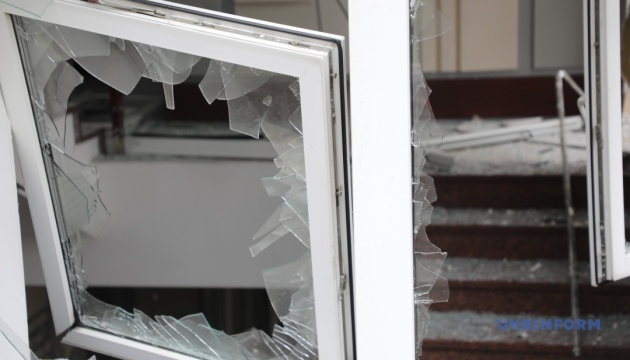


The prime minister is nervous at the prospect of possibly having to play golf with Donald Trump, but he will have much bigger problems on his mind when they meet at Turnberry, political editor David Maddox reports

© Getty